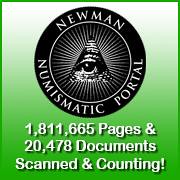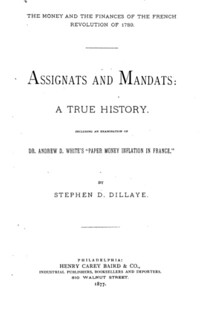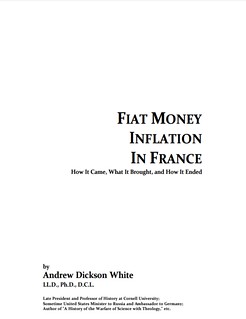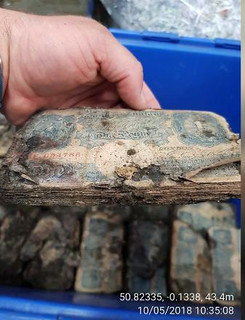
About UsThe Numismatic Bibliomania Society is a non-profit organization devoted to the study and enjoyment of numismatic literature. For more information please see our web site at coinbooks.org SubscriptionsThose wishing to become new E-Sylum subscribers (or wishing to Unsubscribe) can go to the following web page link MembershipThere is a membership application available on the web site Membership Application To join, print the application and return it with your check to the address printed on the application. Print/Digital membership is $40 to addresses in the U.S., and $60 elsewhere. A digital-only membership is available for $25. For those without web access, write to: Terry White, Treasurer AsylumFor Asylum mailing address changes and other membership questions, contact Terry at this email address: terrywhite5475@yahoo.com SubmissionsTo submit items for publication in The E-Sylum, write to the Editor at this address: whomren@gmail.com BUY THE BOOK BEFORE THE COINSale Calendar
|
- WAYNE'S WORDS: THE E-SYLUM JUNE 17, 2018
- KOLBE & FANNING OFFER ADAMS FROSSARD CATALOGUES
- EL SITIO NO. 27 PUBLISHED
- BOOK REVIEW: PACIFIC COAST EXPO SO-CALLED DOLLARS
- 2018 IAPN BOOK PRIZES AWARDED
- BOB EVANS SPEAKS TO CONA ON CENTRAL AMERICA
- THEODORE V. BUTTREY, JR. IN HIS OWN WORDS
- MORE ON TOUSLEY'S STUMPTAIL CURRENCY
- MORE ON FALSE AND FORGED ASSIGNATS
- NOTES FROM E-SYLUM READERS: JUNE 17, 2018
- FURTHER PIANO TOKEN ISSUER ASSISTANCE SOUGHT
- ROBERT BILINSKI'S COIN INVESTMENT BOOK
- VOCABULARY TERMS: NATIONAL, BRANCH, PRIVATE MINTS
- RICHARD WELLINGTON WILLIAMS (1853-1909)
- NEW YORK CITY HONORS HARVEY STACK
- GREYSHEET INTERVIEWS JIM HALPERIN OF HERITAGE
- SOCIETY OF THE CINCINNATI MEDAL ON DISPLAY
- NEWMAN'S 1792 WASHINGTON PRESIDENT $10 GOLD EAGLE
- SELECTIONS FROM HOLABIRD JUNE 2018 SALE
- THE CALDWELL COLLECTION OF AUSTRALIAN BANKNOTES
- RAWLIN'S CHARLES I OXFORD CROWN DISCOVERED
- BELGIAN GOLD COIN HOARD FOUND IN FRANCE
- THE 1943 BOMBAY RESTRIKE PENNY
- NORTH KOREAN COINS GAIN MARKETPLACE VALUE
- EARLY PADDINGTON BEAR COIN CAUSES STIR
- WWII CASH HOARD WORTH FACE VALUE AT BEST
- MINT LAUNCHES VOYAGEURS NATIONAL PARK QUARTER
- ISKOWITZ DESIGNS WWI BRADFORD EXCHANGE SERIES
- HUNGARY FIUMEI ROAD CEMETERY COIN
- THE BROKEN COIN
- OTAKAR DUšEK AWARDED WACKS JUDAICA ART MEDAL
- SHOVING THE QUEER IN ALLENTOWN, PA
- IN OTHER NEWS: JUNE 17, 2018
- FEATURED WEB SITE: NUMISMATIC SOCIETY OF IRELAND
Click here to access the complete archive
Click here to unsubscribe (scroll down)
To comment or submit articles, reply to whomren@gmail.com
Content presented in The E-Sylum is not necessarily researched or independently fact-checked, and views expressed do not necessarily represent those of the Numismatic Bibliomania Society.
WAYNE'S WORDS: THE E-SYLUM JUNE 17, 2018
 No new subscribers this week. We now have 5,765 subscribers. Thank you for reading The E-Sylum. If you enjoy it, please send me the email addresses of friends you think may enjoy it
as well and I'll send them a subscription (but let me know if they are located in the European Union). Contact me at whomren@gmail.com anytime regarding
your subscription, or questions, comments or suggestions about our content.
No new subscribers this week. We now have 5,765 subscribers. Thank you for reading The E-Sylum. If you enjoy it, please send me the email addresses of friends you think may enjoy it
as well and I'll send them a subscription (but let me know if they are located in the European Union). Contact me at whomren@gmail.com anytime regarding
your subscription, or questions, comments or suggestions about our content.
This week we open with more on the John W. Adams sale from Kolbe & Fanning, a new periodical issue, and one book review.
Other topics this week include the 2018 IAPN Book Prizes, Ted Buttrey speaking on the Western American Gold Bars, forged Assignats, coin investment books, branch and private mints, the Society of the Cincinnati medal, selections from the Holabird sale, the 1943 Bombay restrike penny, the Broken Coin and "shoving the queer".
To learn more about the Gerald E. Hart collection, stumptail currency, coins salvaged from the wreck of the SS City of Cairo, coin-operated piano tokens, R. W. Williams, the gold Hawaii statehood medal, the Rawlin's Oxford Crown, the Voyageurs National Park quarter, and Eric P. Newman's favorite coin, read on. Have a great week, everyone!
Wayne Homren
Editor, The E-Sylum
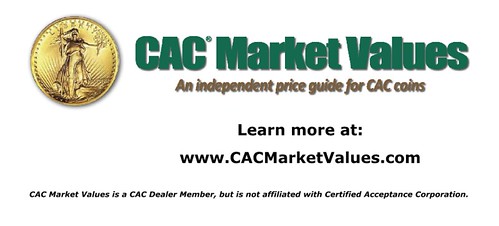
KOLBE & FANNING OFFER ADAMS FROSSARD CATALOGUES
KOLBE & FANNING IN THE JOHN W. ADAMS LIBRARY SALE
July 14, 2018 Sale Includes All of Frossard's Plated Catalogues
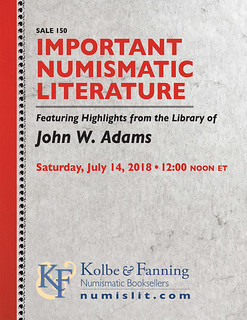 Kolbe & Fanning Numismatic Booksellers are celebrating our 150th Auction by offering highlights of the John W. Adams numismatic library on July 14, 2018.
Kolbe & Fanning Numismatic Booksellers are celebrating our 150th Auction by offering highlights of the John W. Adams numismatic library on July 14, 2018.
The Adams Library includes one of the finest collections of American numismatic auction catalogues ever assembled. Among the highlights is an extensive run of catalogues issued by prolific coin dealer Ed Frossard in the waning years of the 19th century, including all of his plated sales.
Ed Frossard was of Swiss birth, but quickly adopted the United States as his new native land, fighting for the Union in the Civil War only a few years after arriving here. He launched his numismatic career as the first editor of the Coin Collector's Journal, published by J.W. Scott & Co. beginning in 1875. Quickly branching out on his own, he began publishing a regular house organ, Numisma, wrote three books (including standard works on 1794 large cents and Franco-American jetons), and held over 160 auction sales before his death in 1899. Seventeen of his auction catalogues included photographically printed plates, and the Adams Library includes every one of them.
A few particularly noteworthy Frossard lots include:
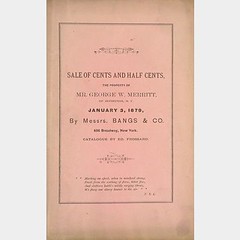
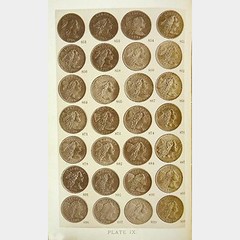
Lots 203 and 211
Lot 203: a copy of Frossard's important 1879 catalogue of the George W. Merritt collection of half cents and large cents, heavily annotated by the Chapman brothers, who were just starting out in business together.
Lot 211: a finely bound copy of Frossard's catalogue of his own extensive collection, illustrated throughout on nine fine heliotype plates.
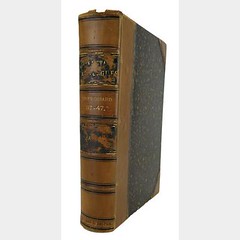

Lot 212
Lot 212: an extraordinary bound volume from the library of Bauman Lowe Belden, featuring no fewer than four plated Frossard sales, including the very rare Sale 40 of R.H. Smith's ancient coins, the rare catalogue of Oriental coins offered as Sale 44, and Frossard's sole plated stamp sale (Sale 46), the annotations to which reveal Belden as being the owner of the first day's sale.
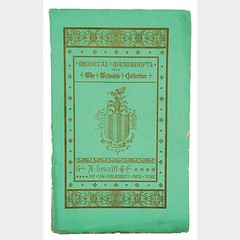
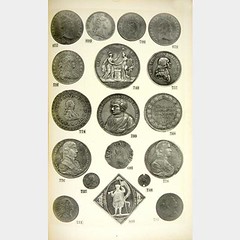
Lot 215
Lot 215: sale catalogues from 1886 and 1887, including Frossard's very rare catalogue of medieval manuscripts from the Trivulzio Library and a number of other sales missing from most collections and even from the American Numismatic Society Library.
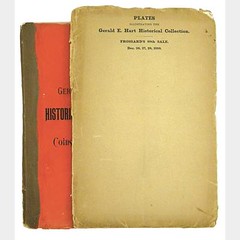

Lot 217
Lot 217: Frossard's 1888 catalogue of the Gerald E. Hart collection, with the photographic plates accompanying the catalogue loose in the original envelope as originally published.
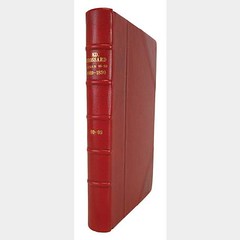
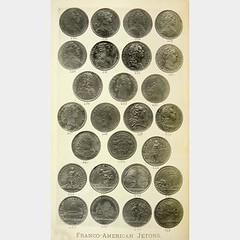
Lot 218
Lot 218: a bound volume of sales from 1889 and 1890, featuring two very rare plated catalogues including Sale 97 (the Palmer collection), the only plated sale missing from Frossard's own set of his catalogues.
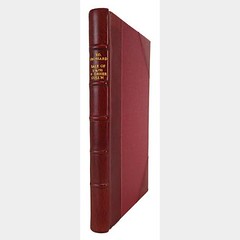
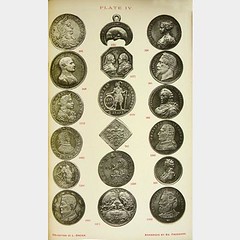
Lot 220
Lot 220: Sales 104 and 106, both with photographic plates, and both of them rare (only 25 copies of 104 were prepared with plates, and 106 is the rarer of the two).

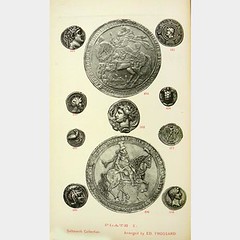
Lot 221
Lot 221: a bound volume of sales from 1892 and 1893, including the catalogue of A.H. Saltmarsh's collection, photographically illustrating a variety of pieces from a Syracusan decadrachm and bell thalers to a Willow Tree shilling and an alleged 1804 over 3 dollar.
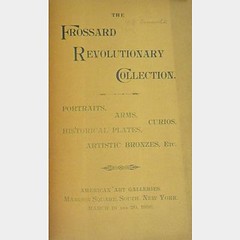
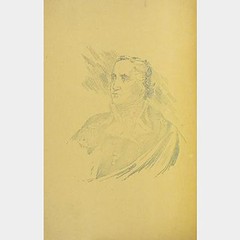
Lot 222
Lot 222: sales from 1893 to 1897 including two very rare and important (if controversial) catalogues of material said to be from the estate of Revolutionary War artist John Trumbull and now held to be otherwise.
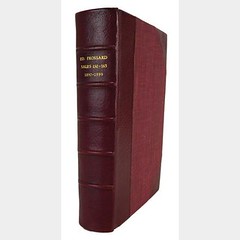
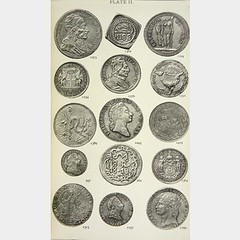
Lot 226
Lot 226: including a very scarce plated copy of Frossard's 150th sale, his last to feature plates.
In addition to the above, the Adams Library contains nearly all of Frossard's unplated sales, many of which are very rare and nearly unknown today. The sale also includes important offerings of his rarely encountered fixed price lists and other interesting Frossard material.
The extensive, full-color catalogue is now available at bid.numislit.com. The sale will feature live online bidding using Kolbe & Fanning’s custom third-party online bidding platform. Printed catalogues are being mailed to established customers. Bidders wishing to make an appointment to view auction lots are invited to contact David Fanning at df@numislit.com .
Kolbe & Fanning Numismatic Booksellers LLC is a licensed and bonded auction firm in the State of Ohio. For more information, please see the Kolbe & Fanning website at numislit.com or email David Fanning at df@numislit.com .
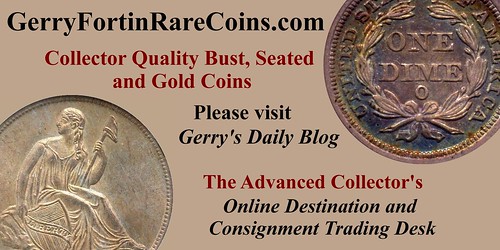
EL SITIO NO. 27 PUBLISHED
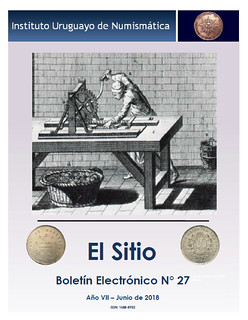 Number 27 (June 2018 ) of “El Sitio”, the electronic magazine of the Instituto Uruguayo de Numismatica, has 27 pages and contains three feature articles plus the usual information
and news sections. This issue coincides with the 63rd anniversary of the Institute, which was established on June 11th 1955. El Sitio No. 27
Number 27 (June 2018 ) of “El Sitio”, the electronic magazine of the Instituto Uruguayo de Numismatica, has 27 pages and contains three feature articles plus the usual information
and news sections. This issue coincides with the 63rd anniversary of the Institute, which was established on June 11th 1955. El Sitio No. 27
Year VII, June 2018, ISSN 1688-8952
In the first article, Hugo Mancebo Decaux recounts the story of the 1844 Silver Peso coin, the first Uruguayan silver coin, and its peculiar indented cord edge milling.

The second article is part of Horacio Morero Ferrero's series on identifying ranch tokens, and focuses on the ten different shearing tokens used by the twin establishments Estancia Los Molinos and Estancia Cerro del Bombero, property of the Gutierrez Zorrilla family of Paysandu.
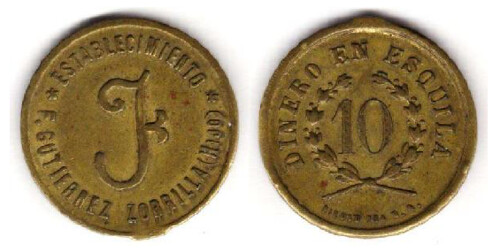
The third article, by Hugo Mancebo Decaux and Arnaldo Gomensoro, deals with the commemorative medals of the 3rd Pan-American Physical Education Congress, which took place in Montevideo, Uruguay in 1950.
The information section comments on the continuous success of the One Piece, One Story cycle of informal talks, and the very interesting pieces that have been discussed; an introductory talk on numismatics was delivered for the members and the filming crew of a local TV programme doing a piece on collectibles; and lastly, in an open letter to the readers the IUN explains its reasons not to join the newly formed (Latin) American Numismatic Union, UNAN.
The complete issue can be viewed online (in Spanish) here:
http://iunuy.org/
BOOK REVIEW: PACIFIC COAST EXPO SO-CALLED DOLLARS
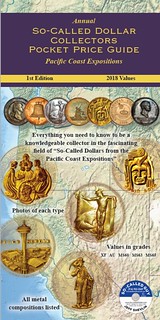 Three Cs come to mind when examining Jeff Shevlin’s latest book. Colorful. Compact. Current valuations. It has a long title for such a small, pocket-size publication, published this week –
So-Called Dollar Collectors Pocket Price Guide, Pacific Coast Expositions.
Three Cs come to mind when examining Jeff Shevlin’s latest book. Colorful. Compact. Current valuations. It has a long title for such a small, pocket-size publication, published this week –
So-Called Dollar Collectors Pocket Price Guide, Pacific Coast Expositions.
It’s professionally designed, with colorful covers and color on every page. Every medal variety is shown in color, of course, but each exposition’s medal photos has a separate background color, a useful and innovative feature. It’s compact, card-cover, glossy page, 8 ½ x 4 ¼-inch size really does fit a pocket.
Current valuations are given in five conditions along with a rarity scale (the usual R-1 to R-10). This is my one complaint; we don’t need five condition categories for medals since medals do not circulate like coins. Three conditions would be satisfactory. (I know Jeff is going to object reading this; he can grade uncirculated medals in three conditions – at higher prices – in those inappropriate coin condition terms “MS-“ something. At least he is not calling them “uncirculated” instead of the preferred term “mint” for medals.)
I like the prices in boxes under a blue-background header listing the conditions. This imitates the new format of Whitman’s Red Book of U.S. Coins and their other publications in a variety of colors. This is destined to become the standard now for all price guides in the field. Incidentally it was Wayte Raymond who, in 1929, invented the tabular format of price lists of coins in a number of conditions. Before that all coins were graded individually.
The author created his own numbering system. There is a cross index section referring back to the standard work on So-Called Dollars, by Hibler and Kappen, the original 1963 book on this series. He even repeated the blue and yellow dust jacket color of the HK original in his covers and two introductory pages.
Master promoter Shevlin has become prominent for taking a sleepy series of medals, so-called dollars, and promoted these to collectors in lively style. So-called dollars is a fascinating series. He has taken a subset of these -- those of the eight Pacific Coast expositions -- and popularized these based on his extensive knowledge of all their 134 varieties.
One other feature should be mentioned. On every line of a medal variety is an open box to check if this variety is owned making this a handy Check List. I wonder if this is a forerunner of others publishing similar check lists of collector’s series. It is an useful tool for those building collections by buying at coin shows.
Listed as “Annual” above the title, apparently he intends to issue this yearly. In addition I would welcome, say, the Chicago 1892-93 World’s Fair medals or other expo medals in similar format. However, don’t wait, get a copy of Jeff Shevlin’s Pacific Coast Expo medal guide now. It’s modestly priced at $19.95.

2018 IAPN BOOK PRIZES AWARDED
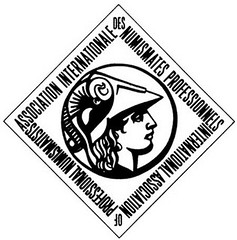 The Prize is awarded annually to the book voted by members of the IAPN as the most deserving, not necessarily from a commercial standpoint. Voting takes place at the IAPN’s General
Assembly, which this year took place in Prague in early May. The Prize was first awarded in 1982, when it was won by the late Dr Martin Price. Since then other winners have included Philip Grierson,
Mark Blackburn, Robert van Arsdell, Robert Friedberg, Sabine Bourgey, David Vagi, Harrington Manville, Christian Dekesel, Sylvia Hurter, Italo Vecchi and Hugo Vanhoudt.
The Prize is awarded annually to the book voted by members of the IAPN as the most deserving, not necessarily from a commercial standpoint. Voting takes place at the IAPN’s General
Assembly, which this year took place in Prague in early May. The Prize was first awarded in 1982, when it was won by the late Dr Martin Price. Since then other winners have included Philip Grierson,
Mark Blackburn, Robert van Arsdell, Robert Friedberg, Sabine Bourgey, David Vagi, Harrington Manville, Christian Dekesel, Sylvia Hurter, Italo Vecchi and Hugo Vanhoudt.
There was an unprecedented total of 22 volumes up for consideration for this year's Prize, the 37th to have been contested. This is not just a testament to the importance of numismatic publishing, especially in the niche areas of numismatics, but demonstrates that 2017 will go down as a stellar year for serious numismatic publications of all kinds. The 22 volumes were published on every continent except Africa and Australasia.
The winner was a British scholar, Paul Stevens, for his The Coins of the English East India Company. Presidency Series. A Catalogue and Pricelist, published by Spink. Placed second was Sanjeev Kumar's Treasures of the Gupta Empire, and third in the overall rankings came Adolfo Modesti and Mario Traina’s volume, Le Medaglie e le Monete che hanno fatto l’Italia (1846-1871).
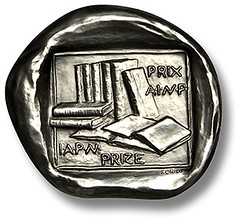 The Prize itself, a cash award of 1,000 Swiss Frs, a winner’s medal and a framed certificate, will be presented to Mr Stevens at a ceremony in London on 27 September.
The Prize itself, a cash award of 1,000 Swiss Frs, a winner’s medal and a framed certificate, will be presented to Mr Stevens at a ceremony in London on 27 September.
Nominations for the 2019 Book Prize, to be decided at the next General Assembly in Carefree, AZ, in May 2019, are now being considered. To be eligible a book has to have been published during the calendar year 2018.
ABRAMSON, Tony. Sceatta List. 2nd edition. Spink, London, 2017.
ISBN 978-1-907427-86-2.
Price: GBP 50. Order from www.spink.com
BENE, Attila. C. Radnitzky, Wiennæ. Magyar Numizmatikai Társulat, Budapest, 2016.
ISBN 978-963-446-749-6
Price: €80. Order from: www.numizmatika.org
DEPEYROT, Georges. Les Monnaies Hellénistiques de Marseille (5e - 1er siècle avant J.-C. Moneta, Wetteren, Belgium, 2017.
ISBN 978-94-01384-68-4
Price: €115. Order from: www.moneta.be
DEUTSCH, Robert. Jewish Coinage During the First Revolt Against Rome 66-73 CE. Archaeological Center Publications, Old Jaffa, Israel, 2017.
ISBN 978-965-7162-22-4
Price: US $90. Order from: www.vcoins.com
DEYELL, John S. Treasure Trade and Tradition: Post-Kidarite Coins of the Gangetic Plains and Punjab Foothills, 590-820 CE. Manohar Publishers, New Delhi, 2017.
ISBN 978-93-5098-133-7
Price: Rs 3,500. Order from: www.manoharbooks.com
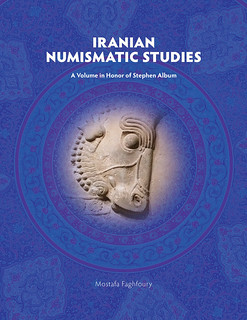
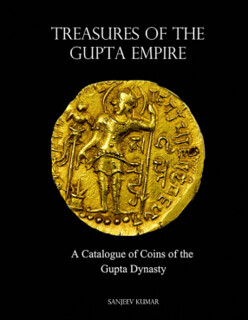
FAGHFOURY, Mostafa (ed). Iranian Numismatic Studies: A Volume in Honor of Stephen Album. Classical Numismatic Group, Lancaster, USA, 2017.
ISBN 978-0-9837652-2-6
Price: US $85. Order from: www.cngcoins.com
GITLER, Haim, and GAMBASH, Gil (eds). Faces of Power: Roman Gold Coins from the Victor A. Adda Collection. The Israel Museum, Jerusalem/Numismatica Ars Classica NAC-AG. Zurich and London,
2017.
ISBN 978-88-942200-1-8
Price: US $79.99. Order from: www.imjshop.com
KUMAR, Sanjeev. Treasures of the Gupta Empire. Shivlee Trust, USA, 2017.
ISBN 978-1-320998-05-5
Price: GBP 120. Order from www.spink.com
LE VAN, Richard K. A Numismatic History of Congo/Zaïre: 1887-1997. Numiscongo, Everett, PA, USA, 2017.
ISBN 978-0-692-81068-2
Price: US $52.95. Order from: www.numiscongo.com
LORENZ, Jurgen. Die Medallions der römischen Kaiserzeit. Battenberg Gietl Verlag, Regenstauf, Germany, 2017.
ISBN 978-3-86646-148-2
Price: €29.90. Order from: www.gietl-verlag.de
MARSH, Michael A. The Gold Sovereign. Revised edition by Steve Hill. Token Publishing, Honiton, England.
ISBN 978-1-908828-36-1.
Price: GBP 35. Order from: www.tokenpublishing.com
MODESTI, Adolfo, and TRAINA, Mario. Le Medaglie e le Monete che hanno fatto l’Italia (1846-1871). Accademia Italiana di Studi Numismatici, Rome, 2017.
No ISBN number issued
Price: €120. Order from: info@numismaticaranieri.it
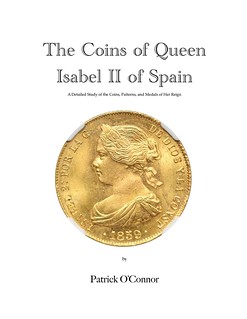
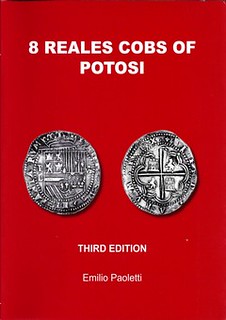
O'CONNOR, Patrick. The Coins of Queen Isabel II of Spain, Aurora Rarities, San Antonio, USA, 2017.
ISBN 978-0-9991616-0-9
Price: US $135. Order from: www.numislit.com
OLAZAR CRISTALDO, Raúl. Historia Monetaria y Numismática del Paraguay. Servipress, Asunción, 2017. No ISBN number issued
Price: US $20. Order from: olazarraul@gmail.com
PAOLETTI, E. 8 Reales Cobs of Potosí. 3rd edition. Emilio Paoletti, Buenos Aires, 2016.
ISBN 978-987-42-0013-6
Price: US $65. Order from: www.sedwickcoins.com
PARDINI, Giacomo. Rinvenimenti monetali e circolazione a Pompei. Le monete dalla Regio VIII,7,1-15. Dipartimento di Scienze del Patrimonio Culturale, Università di Salerno, Italy,
2017.
ISBN 978-88-87744-77-4
Price: €59. Order from: gpardini@unisa.it
RUDILL, Rainer. Göttlicher Antinoos. Battenberg Gietl Verlag, Regenstauf, Germany, 2017.
ISBN 978-3-86646-149-9
Price: €34.90. Order from: www.gietl-verlag.de
SAVIO, Adriano. Genuine Of Fake? The Aboukir Medallions: Originals or Forgeries?. Editrice Bernardi, Trieste, 2017.
ISBN 978-88-85873-34-6 Price €25. Order from: www.numismaticabernardi.com
SILLS, John. Divided Kingdoms: The Iron Age Gold Coinage of Southern England. Chris Rudd, Aylsham, England, 2017.
ISBN 978-0-9566889-3-4
Price: GBP 95. Order from: www.celticcoins.com
STEVENS, Paul. The Coins of the English East India Company. Presidency Series. A Catalogue and Pricelist. Spink, London, 2017.
ISBN 978-1-907427-69-5
Price: GBP 60. Order from www.spink.com
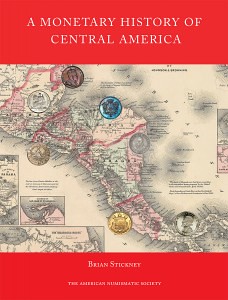
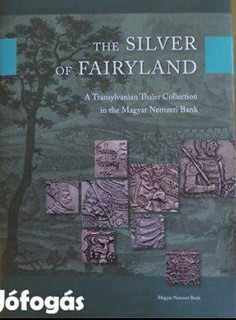
STICKNEY, Brian. A Monetary History of Central America. American Numismatic Society, New York, 2017.
ISBN 978-0-89722-350-8
Price: US $99. Order from: www.numismatics.org
TÓTH, Csaba (editor), The Silver of Fairyland: A Transylvanian Thaler Collection in the Magyar Nemzeti Bank, Magyar Nemzeti Bank, Budapest, 2017.
ISBN 978615-5318-15-3
Price: 2,000 Forint. Order from: www.jofogas.hu
YONAKA, Brad, A Variety Guide to the Fractional Pillar Coinage of Mexico City 1732-1771. Agorocu Consulting Inc, Long Beach, USA, 2017.
ISBN 978-0-9986825-0-1
Price: US $18. Order from: acanthite@live.com
For more information on the IAPN Book Prize, see:
https://www.iapn-coins.org/iapn/iapn-book-prize.html
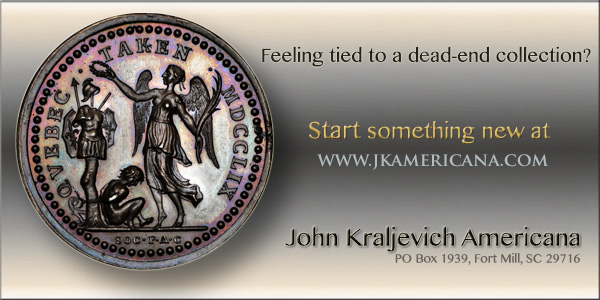
BOB EVANS SPEAKS TO CONA ON CENTRAL AMERICA
I will be giving a PowerPoint presentation about the SS Central America treasure Wednesday evening at 7PM, June 20, at the monthly meeting of the Central Ohio Numismatic Association (CONA.) Readers are cordially invited. I am told it is open to all, and they frequently have non-members in attendance. The meeting is held at the Oakstone Academy (Oakstone High School on some maps) in Westerville, at 900 Club Dr.
This will be primarily a numismatic and historical talk, with considerable technical coin stuff, but it's pretty interesting coin stuff with lots of relevance to the history of the treasure. And I will be discussing the discoveries I have made during the last five months in the curatorial lab, taking the rust and minerals off the gold coins and preparing the treasure for market.
It is my first Central Ohio talk about the treasure since the 90s. I will also be giving a Money Talks presentation at the ANA World's Fair of Money in Philadelphia, on Friday, August 17, at 11 AM.
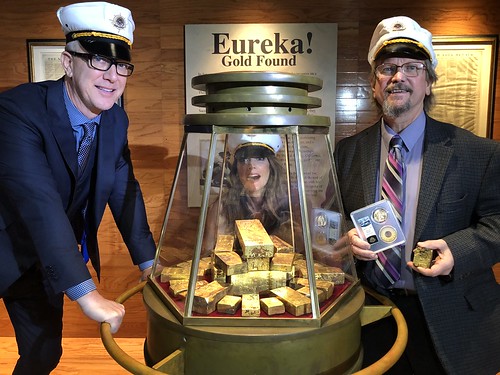
Dwight Manley, Christina Pascucci and Bob Evans
To read earlier E-Sylum articles, see:
LONG BEACH “SHIP OF GOLD” EXHIBIT (http://www.coinbooks.org/v21/esylum_v21n09a27.html) LATEST SS CENTRAL AMERICA FINDS REVEALED (http://www.coinbooks.org/esylum_v17n30a05.html)
VIDEO: IN DEEP WATER: FINDING THE SS CENTRAL AMERICA (http://www.coinbooks.org/v20/esylum_v20n45a30.html)
LATEST SS CENTRAL AMERICA TREASURES AT LONG BEACH (http://www.coinbooks.org/v21/esylum_v21n05a10.html)
THEODORE V. BUTTREY, JR. IN HIS OWN WORDS
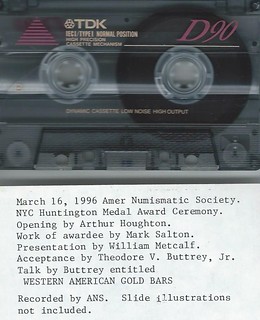 In 1996, the American Numismatic Society (ANS) presented Ted Buttrey with the Huntington medal, its highest award for numismatic scholarship. The event included remarks from Arthur
Houghton, Mark Salton, and William Metcalf, followed by Buttrey’s lecture on “Western American Gold Bars.” In processing papers from the Eric P. Newman library, a cassette tape recording of the event
was found. This has been digitized and is available on Newman Portal or via the ANS library catalog.
In 1996, the American Numismatic Society (ANS) presented Ted Buttrey with the Huntington medal, its highest award for numismatic scholarship. The event included remarks from Arthur
Houghton, Mark Salton, and William Metcalf, followed by Buttrey’s lecture on “Western American Gold Bars.” In processing papers from the Eric P. Newman library, a cassette tape recording of the event
was found. This has been digitized and is available on Newman Portal or via the ANS library catalog.
Buttrey’s lecture dates to the height of the controversy regarding the authenticity of gold assay bars sourced by John J. Ford, Jr. and Paul Franklin. In this presentation Buttrey speaks to a number of points, in particular the sudden appearance of this material in the 1950s. Due in great part to the efforts of Buttrey, Eric P. Newman, and John Kleeberg, numismatists today regard many pieces once considered “market acceptable” as forgeries. The Newman Portal acknowledges ANS librarian David Hill and publications director Andrew Reinhard for their assistance with this material.
Link to Buttrey lecture on Newman Portal:
https://nnp.wustl.edu/library/multimediadetail/515008?Year=1996&take=50
Link to Buttrey lecture via ANS library catalog (DONUM):
https://donum.numismatics.org/cgi-bin/koha/opac-detail.pl?biblionumber=166829
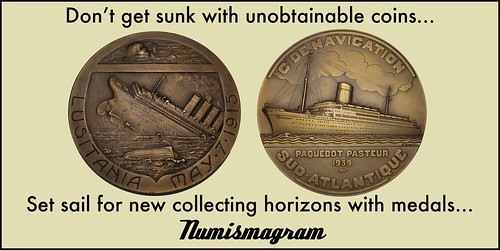
MORE ON TOUSLEY'S STUMPTAIL CURRENCY
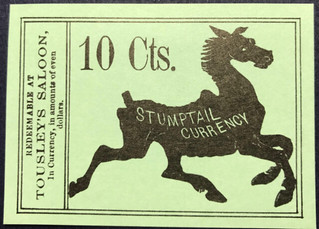
Our friend Mark Lighterman, the ANA Parliamentarian, found this in the links provided in the June 3, 2018 E-Sylum. The note is more than likely from Iowa and probably Iowa City.
IOWA JOURNAL OF HISTORY AND POLITICS
BENJAMIN F. SHAMBAUGH EDITOR
VOLUME XXXII 1934.
PUBLISHED QUARTERLY BY THE STATE HISTORICAL SOCIETY OF IOWA, IOWA CITY, IOWA
MONEY IN PIONEER IOWA Page 36
This private paper was of two kinds — fractional currency, to assist in making change, and bills or checks of larger denominations, similar to bank notes. These larger bills were a form of deferred payment as well as a medium of exchange. The use of paper for parts of a dollar seems to have been rather common with business men. Some of these “shinplasters” resembled bank notes in form, although the paper was inferior.
An example of this scrip shows three pictures similar to those on bank notes — a hunting scene, a drove of cattle, and an anvil — with the words “M. Frank & Bro. Will pay fifty cents on demand, in current bank bills, When a dollar's worth of these Checks are presented at their Wholesale and Retail Clothing House, WASHINGTON STREET, IOWA CITY.”
A small green card in a collection of paper currency bears the picture of an angular bob-tailed horse on which are printed the words “stumptail currency”. Above the horse are the words “10 Cts.” and across one end the “Redeemable at Tousley’s Saloon, In Currency, in amounts of even dollars" — also, no doubt, in a more liquid commodity.
Personal checks and notes also developed into paper money. How this money came about is explained in J. M. D. Burrows’s Fifty Years in Iowa In the winter of 1853-1854, Burrows and Prettyman were buying hogs and shipping them east. The drafts received from the eastern merchants were sold to or deposited with banks in Illinois or with Iowa firms doing an exchange business.
To read the earlier E-Sylum article, see:
STUMP-TAIL CURRENCY AND THE INTERNET ARCHIVE (http://www.coinbooks.org/v21/esylum_v21n22a13.html)
MORE ON FALSE AND FORGED ASSIGNATS
“SEVENTEEN MANUFACTURING ESTABLISHMENTS were in full operation in London, with a force of four hundred men devoted to the production of false and forged Assignats. The success and the extent of the labor may be judged by the quantity and value they represented. In the month of May, 1795, it was found that there were in circulation from 12,000,000,000, to 15,000,000,000 francs of forged Assignats, which were so exact in form, appearance. , texture, and design, as to defy detection, except by the most minute examination and exact knowledge of the secret signs by which the initiated were taught to distinguish them.“ (p. 33)
To read the complete book, see:
Assignats and Mandats: A True History, Including an Examination of Dr. Andrew D. White's
"Paper Money Inflation in France" (https://books.google.de/books/about/Assignats_and_Mandats.html?id=tr4wAAAAYAAJ&redir_esc=y)
Uwe adds:
Also see footnote 1. And while we are at it - a second source
“While, as we have seen, such enormous sums, rising from twenty to forty thousand millions of francs in paper, were put in circulation by the successive governments of the Revolution, enormous sums had been set afloat in counterfeits by criminals and by the enemies of France. These came not only from various parts of the French Republic but from nearly all the surrounding nations, the main source being London. Thence it was that Count Joseph de Puisaye sent off cargoes of false paper, excellently engraved and printed, through ports in Brittany and other disaffected parts of France. One seizure by General Hoche was declared by him to exceed in nominal value ten thousand millions of francs. With the exception of a few of these issues, detection was exceedingly difficult, even for experts; for the vast majority of the people it was impossible.” pp. 77-78
To read the complete book, see:
Fiat Money Inflation in France
(http://www.libertarianpress.com/fiatmoneyinflation
/Fiat%20Money%20Inflation%20in%20France%20by%20Andrew
%20Dickson%20White.pdf)
To read the earlier E-Sylum article, see:
BOOK REVIEW: PLAYFAIR (http://www.coinbooks.org/v21/esylum_v21n03a07.html)

NOTES FROM E-SYLUM READERS: JUNE 17, 2018
Coins Salvaged from the SS City of Cairo
Regarding the WWII trove of silver coins salvaged from the wreck of the SS City of Cairo, Ian Marshall writes:
Not ALL coins were melted! Most were melted but a few were offered to relatives. As a nephew of Captain Rogerson, I have two.

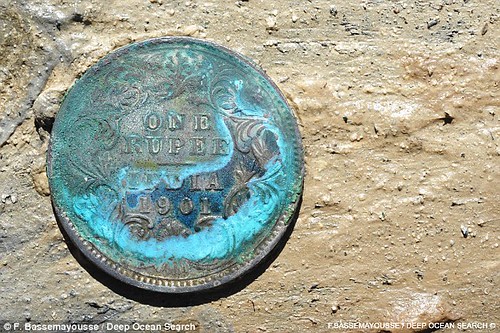
To read the earlier E-Sylum article, see:
SS CITY OF CAIRO COIN TREASURE SALVAGED (http://www.coinbooks.org/esylum_v18n16a32.html)
Pawn Stars Location: Las Vegas
Last week Julian Beer of the Birmingham City University stated that he was inspired to make a replica of the Washington Cent by an episode of Pawn Stars "which centres on life at a Los
Angeles pawn shop..." Duane H. Feisel writes:
Las Vegas, not Los Angeles!
To read the earlier E-Sylum article, see:
BIRMINGHAM WASHINGTON CENT REPLICAS STRUCK (http://www.coinbooks.org/v21/esylum_v21n23a21.html)
Moe Berg Film Opens June 22, 2018
To read the complete article, see:
The baseball star who trained as a secret ASSASSIN: The unlikely
story of catcher Moe Berg, who investigated Germany's progress on the atomic bomb in the World War II and helped the US assault on Japan, and is now being told by Hollywood
(http://www.dailymail.co.uk/news/article-5852855/Pro-baseball-player-secretly-trained-government-ASSASSIN-World-War-II.html)
To read the earlier E-Sylum articles, see:
MOE BERG'S PRESIDENTIAL MEDAL OF FREEDOM (http://www.coinbooks.org/esylum_v19n35a33.html)
NOTES FROM E-SYLUM READERS: SEPTEMBER 11, 2016 : Moe Berg Jewish-American Hall of Fame Medal
(http://www.coinbooks.org/esylum_v19n37a12.html)
WAYNE'S NUMISMATIC DIARY: MAY 13, 2018 (http://www.coinbooks.org/v21/esylum_v21n19a27.html)
About Books on Civil War Topics
Dick Johnson writes:
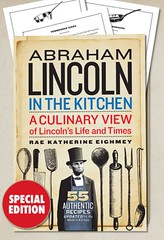 At a lecture on Abraham Lincoln by Lincoln authority Charles van Doren, during Q&A I asked him since so many books have already been published on Lincoln would this ever stop? I had thought
just about every subject on Lincoln had been covered. There couldn’t be anything new to write about.
At a lecture on Abraham Lincoln by Lincoln authority Charles van Doren, during Q&A I asked him since so many books have already been published on Lincoln would this ever stop? I had thought
just about every subject on Lincoln had been covered. There couldn’t be anything new to write about.
His answer: “Never!”
This is certainly true. Here’s proof: The Smithsonian just published a Lincoln Cookbook. “55 Authentic Recipes!”
Abraham Lincoln in the Kitchen is a culinary biography like none other. This 224-page paperback book shows the everyday life of one of the nation's most beloved presidents, Abraham Lincoln, through the foods he cooked, served, and ate. Award-winning food historian and chef Rae Katherine Eighmey does some culinary sleuthing to bring the tastes, flavors, and textures of 1820-1865 alive for today's cooks. This is a side of Lincoln never before examined, and a true taste of history.
To read the complete announcement, see:
Abraham Lincoln in the Kitchen is a culinary biography like none
other.
To read the earlier E-Sylum article, see:
BOOK REVIEW: PATRIOTIC CIVIL WAR TOKENS 6TH ED. (http://www.coinbooks.org/v21/esylum_v21n20a06.html)
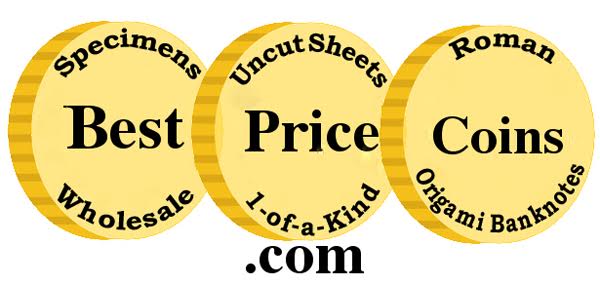
FURTHER PIANO TOKEN ISSUER ASSISTANCE SOUGHT
Two weeks ago we ran a notice about the second edition of A Tune for a Token by Q. David Bowers. The first was published by the Token and Medal Society in 1975 and became the standard reference on this admittedly limited and esoteric series—nickel-size tokens, mostly brass, used to play tunes in coin-operated electric pianos and music boxes circa 1896 to the late 1920s. Now comes the second edition, also to be published by TAMS. Vastly enhanced and expanded, it is expected to be 200 to 300 pages in length and in full color. David Schenkman has been the main advisor and has also contributed the foreword. Further information as to ordering will be made available this summer.
While many issuers of tokens have been tracked down, some remain unknown—“mavericks” as they are called by token collectors.
It would seem that such issuers as Beck & Stener, Puss & Davis, and Mayberry & Boyer probably advertised somewhere or were otherwise listed, and can be found today. Other names such as Carl’s Place, Empress Café, and Geo. Weaver may be forever unattributable, although those that have street names might be able to be traced.
Mysteries include these, some with clues based on other lettering on the token:
B & H Music Co. • B-350: Beck & Stener • B-470: The Big Onion • B-500: Al. Blase [6th & 7th, Washington] • B-780: The Buffalo
C-450: Carl’s Place • C-550: C.C.G. (Omaha, NE?) • C-820: C.J. Connell • C-850: Corner Café • C-855: Corner 151 Café • C-890: Cozy Corner Bar
D-130: Daugherty Bros.
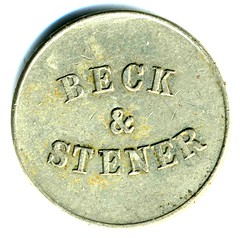
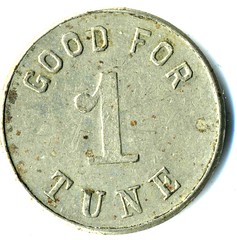
E-570: Empress Café [12th & Jackson]
F-480: Fitzpatrick PA 9618 [may be the number of a lodge in Pennsylvania?]
G-310: Geo. & Joe’s Place
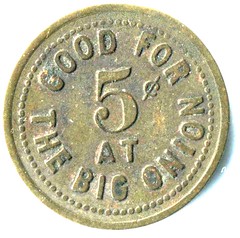
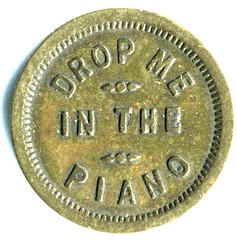
H-150: H. & J. Place
J-250: Jackson St. Drug Store •J-650 [329 Mo. Ave.]
K-440: Charles Kennedy’s • K-800: Kuhlmann’s Café
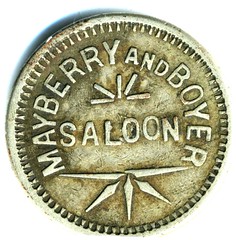
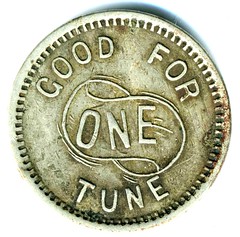
M-300: Manhattan Café • M-320: Manhattan Pool Room • M-360: H.E. Mann Studios [token made by the Los Angeles Rubber Stamp Co.] • M-475: Marshall Music Co. • M-520: Mayberry and Boyer Saloon • M-540: Maynard’s Piano Orchestra [2004-2020 Market St.] • M-600: McNabb’s • M-680: Meile Bros. Café • M-730• E.T. Messinger • M-740: Metz & Weber • M-860: The Monogram / J.B.
N-620: Norton Pharmacy Inc.
P-140: P. & H. Music Co. • P-300: Palm Garden • P-390: Patty’s Place • P-840: Puss & Davis
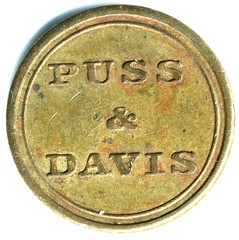
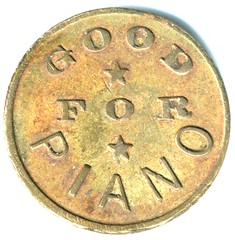
R-550: Rilobon • R-760: Royal Music Hall • R-840: Ada Russel
S-260: A. Schultes • S-380: Soll R. Scott • S-720: Smoke House
T-160: J.D. Taylor Cigar Store • T-300: John Thieman Café • T-310: John Thieman Café
W-440: W.E. & S. Co. • W-480: Geo. Weaver • W-500: C. Webber • W-530: Weber Music Co. • W-680: Western Sales Corp’n • W-750: J.L. Wilson
If you can corral any of these mavericks, let Dave Bowers know at qdbarchive@metrocast.net and you’ll receive a reply. Dave, a frequent contributor to eSylum, advises your editor that he will be at the Whitman Coin & Collectibles Expo in Baltimore this coming Thursday and also on Friday morning, in case you want to track him down and say
To read the earlier E-Sylum article, see:
ASSISTANCE SOUGHT IN IDENTIFYING TOKEN ISSUERS (http://www.coinbooks.org/v21/esylum_v21n22a27.html)

ROBERT BILINSKI'S COIN INVESTMENT BOOK
Dick Johnson writes (in reference to Joel Orosz's earlier response):
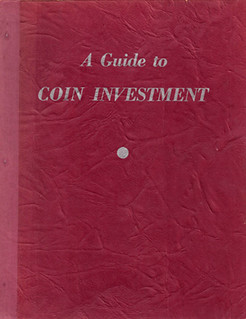 Your mention of Robert Bilinski’s name in last week’s E-Sylum brought back memories of my contact with him. I acquired his first book and studied it extensively, not for his
projections of coin prices rising but his study of the number of coin collectors and where they lived, among other characteristics. I found an error in one of his listings and wrote him. His reply
was to question in my thinking of his methodology in gathering his data. I concluded he just made up his figures.
Your mention of Robert Bilinski’s name in last week’s E-Sylum brought back memories of my contact with him. I acquired his first book and studied it extensively, not for his
projections of coin prices rising but his study of the number of coin collectors and where they lived, among other characteristics. I found an error in one of his listings and wrote him. His reply
was to question in my thinking of his methodology in gathering his data. I concluded he just made up his figures.
Incidentally, I had a similar conversation with Lee Hewitt about the same subject, but his was base on actual data. He had a rare insight based on the location of the subscribers to his Numismatic Scrapbook.magazine. He stated collectors were located in a belt and three pockets.
The belt, he said, were in the states of Wisconsin, Illinois, Indiana, Ohio, Pennsylvania and New York. The pockets were Florida, Texas and California. Apparently the number of subscribers in other states were minimal.
I added:
Those are also the most populous states. If collectors are a small %age of the general population, you'll naturally find more of them in the more populous states. For my Newman Portal outreach to state organizations I started with my close contacts but then made a list ordered by general population. Those states were naturally in the top ten (Central States covers several at once). The further down the list the less likely the state even has a state club to begin with.
Joel adds:
Hewitt’s observation fascinate me. You are certainly correct, Wayne, in noting that the “belt” States had most of the larger population concentrations of the era (1950s and 1960s). In addition, the belt states also track the first of the great westward migrations quite closely, from New York and Pennsylvania across the old Northwest Territories.
The pocket states, on the other hand, track the postwar migrations toward more temperate states (in terms of climate). But that was clearly a postwar phenomenon—it’s striking how few coin collectors hailed from the South during the 19th century.
As for Dr. Bilinski, I have written about him in several publications: Rare Coin Review, The Numismatist, The Asylum, and Coin World. My impression is that Bilinski’s data were generally sound, although skewed toward states where there were US Navy facilities, thus underrepresenting the Midwest. In any event, his projections of price appreciation tended toward the slightly conservative, unlike Bilinski’s “evil twin,” George Haylings, who simply extrapolated from past peak performance, without ever taking into account the inevitably of market downturns and corrections.
To read one of Joel's Coin World articles on Bilinski, see: Are you an investor in coins? Bilinski wrote the book on that (https://www.coinworld.com/news/us-coins/2016/09/investors-owe-him-a-nice-pat-on-the-back.all.html)
To read the earlier E-Sylum article, see:
HOW TO MAKE A KILLING IN COINS (http://www.coinbooks.org/v21/esylum_v21n23a10.html)

VOCABULARY TERMS: NATIONAL, BRANCH, PRIVATE MINTS
National Mint. A government mint; the factory that produces coins for the country in which it is located. Forty-nine countries at the end of the 20th century have
national mints; others have their coins struck by custom minting either at other national mints or by a PRIVATE MINT.
CLASS 12.2
Branch Mint. A subsidiary mint in countries with more than one national mint. Branch mints are more concerned with production of struck pieces and may not have the capability of engraving and die production. In the United States, the Philadelphia Mint prepares dies for all branch mints (until 1994 when some dies were made at the Denver Mint) – including San Francisco, West Point, and formerly in New Orleans, Carson City, Dahlonaga Georgia.
The Royal Canadian Mint, was established in Ottawa, Ontario in 1908 as a branch of England’s Royal Mint; it became a Canadian Crown Corporation 1960. It now has branch mints in Hull, Quebec (since 1965 for numismatic products), and Winnipeg (since 1975 for high production coinage). Other countries that have branch mints include France, Germany, India, Japan in addition to the United States and Canada.
The first branch mints were established by Isaac Newton (1642-1727) in England, after he was made warden of the London Mint in 1696. He oversaw the establishment of branch mints in Bristol, Chester, Exeter, Norwich and York. Dies would be made at the Royal Mint in London, shipped to these branch mints and coins struck there.
Branch mints are established, in any country from the 17th century through the 20th century, for the same reasons: to meet local demand for coin, and to reduce costs of transporting bullion or
struck coin.
CLASS 12.2
References: CH54 {1983} HAXBY.
Private Mint. A nongovernment mint. A private manufacturer with blanking, coining and die-making equipment to custom produce coins, tokens and small medals for anyone. Private mints have been established in countries of high industrial activity: Great Britain, Germany, Belgium, Spain, Sweden, Switzerland, and the United States. The term “mint” in the term implies the manufacture of coins, requiring the use of coining presses. But these same coining presses can also strike tokens – and medals like coins (see COIN-MEDAL). To keep their presses busy, private mints frequently strike noncoin items. However, coining presses cannot strike pieces larger than, say, two inches; thus private mints generally do not have the capacity for large medal manufacturing. This is the specialize activity of medal makers (see MEDAL MANUFACTURING).
Private mints have never replaced national mints (governments closely guard this exclusive right to strike their own coins). However private mints have rendered services, like supplying roll strip or blanks, to national mints in times of need. Only in the 20th century have private mints taken on a marketing activity to sell direct to the public the coins, medals and tokens they produce.
History of private mints. The first such private mint was Matthew Boulton’s Soho Mint in Birmingham, established in 1788. In the 1760s Boulton developed an engine business based upon the inventions of James Watt. Once this business was running smoothly Boulton sought other ventures involving machinery that could run off his steam powered engines. He made experiments with die stamping, establishing, in 1782, a shop for diestamping and a button factory. He struck some prototype coins as early as 1786.
There was a shortage of copper coinage in England at the time and Boulton developed a plan for striking coins to relieve the shortage. To implement this plan he established the Soho Mint. He hired Jean-Pierre Droz (1746-1823), a Swiss engraver working at the Paris Mint, built a building and filled it with machinery run by his engines. He didn’t get the contract to strike coins for the sovereignty, but he did strike coins for countries (Bahamas) and tokens for the merchants of England. In 1805 this early effort failed but some of the equipment was obtained by the son of his old partner, James Watt, who had established a mint under this name. And some was obtained by Ralph Heaton, who, in 1819 established the Heaton Mint. The later flourished and has been called The Birmingham Mint, or simply, The Mint, ever since.
While the Birmingham Mint dominated private custom coining for a century, some German firms were very active. Berlin’s Oertel not only struck coins, but medals of all sizes, and tokens as well. Here are some notable private mints and their marks:
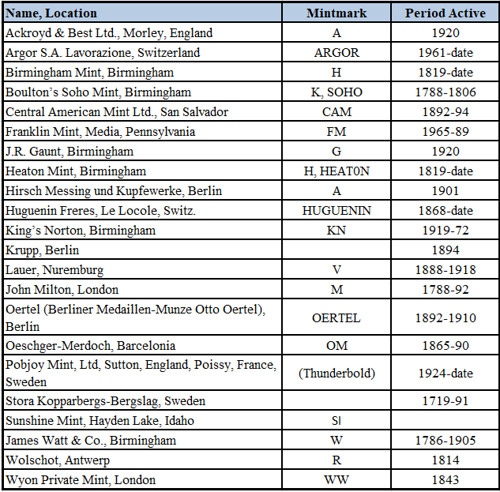
CLASS 12.2
References::
{The Krause publication Unusual Coins, in effect, lists the issues of private mints of world.} Book lovers should be word lovers as well.
Looking for the meaning of a numismatic word, or the description of a term? Try the Newman Numismatic Portal's Numismatic Dictionary at: https://nnp.wustl.edu/library/dictionary
Or if you would like a printed copy of the complete Encyclopedia, it is available. There are 1,854 terms, on 678 pages, in The Encyclopedia of Coin and Medal Technology. Even running two a week would require more than 19 years to publish them all. If you would like an advance draft of this vital reference work it may be obtained from the author for your check of $50 sent postpaid. Dick Johnson, 139 Thompson Drive, Torrington, CT 06790.
RICHARD WELLINGTON WILLIAMS (1853-1909)
Richard Wellington Williams (1853-1909), was born on July 15, 1853, at Montreal, Québec, son of Richard Williams (1822-1854), an English immigrant and confectioner, and Annie Gendle Williams (1827-1900). He was a chemist, druggist, and numismatist living at Trois-Rivières, Québec.
His father died when he was a child, and his mother remarried to Thomas Roderick Massey, J.P., of Nicolet County, Quebec.
In 1865, the family moved into the town of Nicolet, where he was educated and after graduation attended Nicolet College. This is the same college which had a coin collection containing the 1897 Unveiling of the Washington Monument Medal issued by the Cincinnati Society now in the Lupia Numismatic Library. It is possible Williams was the donor.
After graduating in 1870, he worked for a druggist in Three Rivers.
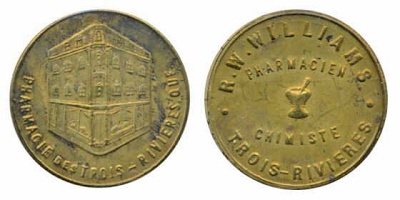
Store Card of R. W. Williams circa 1889, Breton 614. It was first published in 1893 in the Canadian Antiquarian Society and Numismatic Journal on page 63
In 1874, he began collecting coins.
On June 8, 1889, he joined the Numismatic and Antiquarian Society of Montreal.
On June 8, 1889, he joined the Numismatic and Antiquarian Society of Montreal.
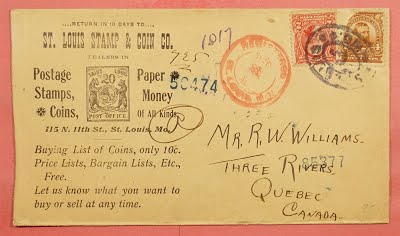
Frank Ellis of St. Louis Stamp & Coin correspondence with R. W. Williams, postmarked December 21, 1903.
To read the complete article, see:
WILLIAMS, RICHARD WELLINGTON
(https://sites.google.com/a/numismaticmall.com/www/numismaticmall-com/williams-richard-wellington)
The entire inventory of the Lupia Numismatic Library is for sale. Individual items will be available before the remaining archives are broken up into parcels sold at philatelic auctions in the U. S. and Hong Kong. Check NumismaticMall.com frequently as dozens of new items with estimates will be posted daily until everything is sold.
All inquiries will be given prompt and courteous attention. Write to: john@numismaticmall.com .

NEW YORK CITY HONORS HARVEY STACK
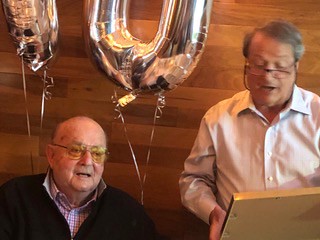 Harvey G. Stack, received on his 90th Birthday a special framed proclamation honoring his birthday and his dedication to numismatics for over seven decades.
Harvey G. Stack, received on his 90th Birthday a special framed proclamation honoring his birthday and his dedication to numismatics for over seven decades.
The Proclamation was presented by the New York City Council and signed by Council Speaker Corey Johnson
After the presentation, Harvey thanked his wife Harriet, his son Larry, daughter Susan, four Grandchildren, and four great-grandchilden, his sister in law, his many nieces and nephew, and other honored guests.
It was a landmark event and was he very appreciative for all the good wishes he received.
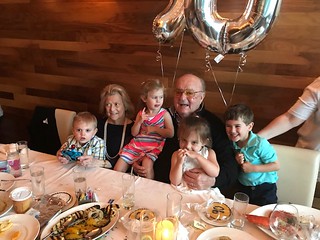
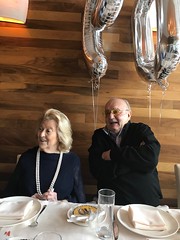
The New York City Council is proud to honor Harvey G. Stack in celebration of his 90th birthday and his extraordinary contributions to the numismatic arena around the world; and
WHEREAS: Born on June 3, 1928, Harvey G. Stack is the son of Morton M. Stack and Muriel Stack. In 1933, his father teamed up with his uncle, Joseph B. Stack, to launch Stack’s rare coin business. Harvey Stack joined the family business at the age of 19, in 1947, following his cousins Norman and Benjamin Stack. Over the next 62 years, Harvey honed his expertise working fulltime as Chief Manager of Business Affairs. During this tenure, Stack’s continued to grow yet remained a true family affair with the addition of his wife, Harriet, his son, Lawrence, in 1973 and his daughter, Susan, in 1976; and
WHEREAS: Although Harvey Stack retired in 2009, he returned to work in 2011 as a senior consultant for Stack’s Bowers Galleries, along with his son, Lawrence. Both father and son were raised in numismatics, learned from the masters of the field and are legends in the industry today; and Harvey Stack is a Past President of Professional Numismatics Guild, the recipient of its Founder’s Award, and the American Numismatic Association’s Numismatist of the Year and a member of the ANA Hall of Fame; and
WHEREAS: Over the course of his remarkable career, Harvey Stack personally conducted more auction sales than anyone in the numismatic industry, appraised and cataloged countless numismatic rarities, and was responsible for the sale of some of the most spectacular collections in history, including the Anderson-Dupont Collection, the Davis-Graves Collection, and the Harold S. Bareford Collection; and
WHEREAS: After the death of Josiah K. Lilly, whom Harvey Stack and his cousins had helped to assemble a collection of 6,150 gold coins of the world over a period of years, the Lilly Collection did not go to the auction block, and through the efforts of Harvey Stack and his family instead became the property of America’s citizens, after the Smithsonian approached Congress and secured passage of legislation that brought the Lilly Collection into the National Numismatic Collection; and
WHEREAS: Harvey Stack and his family have also distinguished themselves in numismatics through their many philanthropic efforts. In 1992, the Stacks donated extensive correspondence from Charles E. Barber, Mint engraver (from the period 1880 to 1917). The following year, he contributed a 1792 Birch cent. In 1994, Harvey and Lawrence Stack donated two Proof 1879 Quintuple Stellas, one in gold and one in copper-gilt, to the National Numismatic Collection. Harvey Stack has also overseen the sale of countless numismatic rarities both privately and at auction, including 1804 Draped Bust dollars and 1913 Liberty Head 5-cent coins. He was also instrumental in sale in 24 auctions of the renowned collection amassed by John J. Ford, Jr.; and the auction sale of the only 1933 St.-Gaudens $20 gold double eagle declared by the federal government as legal to own; and
WHEREAS: Mr. Stack’s passion has been both highly influential and highly contagious. In 1972, Harvey Stack testified before a congressional subcommittee leading up to the passage the following year of the original Hobby Protection Act (which has been updated since). In 1996, he testified again before the U.S. House Banking Committee to propose the State Commemorative Quarters series. When the program ended in 2008, the U.S. Mint estimated that 147 million people were collecting State quarters; and
WHEREAS: Now at the age of 90, Mr. Stack continues to distinguish himself not merely for the length of his life but for the incredibly positive impact he has in so many lives. Today, he continues to share his adventures, insights and experiences as a professional numismatist both in person and on the Stack’s Bowers website for readers everywhere. He has truly excelled throughout his career and has earned the esteem of all New Yorkers; now, therefore
BE IT KNOWN: That the New York City Council gratefully honors
Harvey G. Stack
and wishes him the best in celebration of his
90TH BIRTHDAY
Signed this 3rd day of June in the year Twenty Eighteen.
s/________________
COREY JOHNSON
Speaker
For the Entire Council
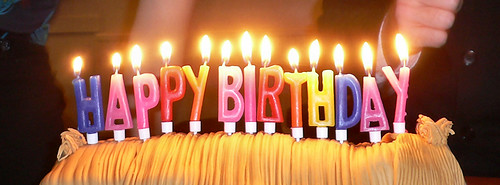

GREYSHEET INTERVIEWS JIM HALPERIN OF HERITAGE
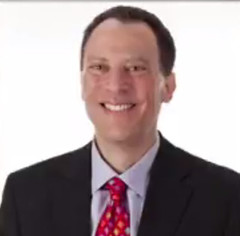 Greysheet Publisher John Feigenbaum recently had the pleasure of interviewing Heritage Auctions Founder and Co-Chairman Jim Halperin, a man who took his love of collectibles and knowledge
of computer technology to build one of the largest and most successful auction firms around. Halperin, born in Boston in the 1950s, grew up in the era of collecting coins, stamps, and comic books and
followed his heart to build his own collectibles business at the age of 16. Accepted to Harvard University, the young Halperin soon decided his future was in running his own numismatic firm.
Greysheet Publisher John Feigenbaum recently had the pleasure of interviewing Heritage Auctions Founder and Co-Chairman Jim Halperin, a man who took his love of collectibles and knowledge
of computer technology to build one of the largest and most successful auction firms around. Halperin, born in Boston in the 1950s, grew up in the era of collecting coins, stamps, and comic books and
followed his heart to build his own collectibles business at the age of 16. Accepted to Harvard University, the young Halperin soon decided his future was in running his own numismatic firm.
In 1975, Halperin helped pioneer the first mainframe computer system to operate in the numismatic realm and by the end of the 1970s, his firm had become one of the top in the industry. In 1982, he merged his operations with those of his friend Steve Ivy to establish Heritage Auctions. A couple years later, Halperin wrote a book that became the basis for the grading standards upon which Professional Coin Grading Services (PCGS) and Numismatic Guaranty Corporation (NGC) built their successful third-party certification businesses.
As the internet and computer technology became a mainstay in the numismatic industry and general commerce in the 1990s and 2000s, Heritage soared to the top of the collectibles world. Today, it’s one of the hobby’s biggest players, handling coins such as the 1913 Liberty nickel, 1894-S Barber dime, 1804 dollar, and 1787 Brasher Doubloon.
Feigenbaum and Halperin’s entertaining, enlightening conversation takes listeners through many of the iconic auctioneer’s career highlights, includes his tips for how to succeed as a hobbyist, and hints at what’s to come for the future of numismatics.
To read the complete article, see:
Exclusive Interview with Jim Halperin, Founder & Co-Chairman of Heritage
Auctions (http://blog.greysheet.com/exclusive-interview-with-jim-halperin-founder-co-chairman-of-heritage-auctions/)
To listen to the postcast video, see: https://youtu.be/nASds1pr-wk

SOCIETY OF THE CINCINNATI MEDAL ON DISPLAY
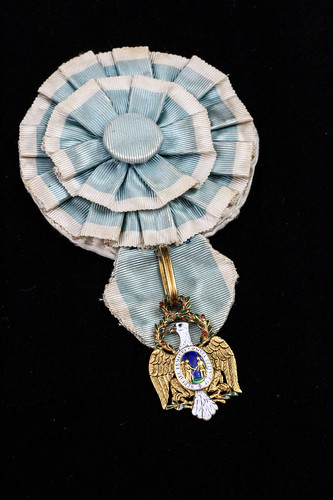 Fort Ticonderoga today announced the public display of one of the rarest and most important objects from the nation’s founding – an original Society of the Cincinnati gold eagle medal.
Fort Ticonderoga today announced the public display of one of the rarest and most important objects from the nation’s founding – an original Society of the Cincinnati gold eagle medal.
The priceless Revolutionary War medal is one of two surviving examples produced in Paris in 1783 for purchase by officers of the Continental Army. The medal, which has never been viewed publicly, is on generous loan to Fort Ticonderoga from the Robert Nittolo Collection, the largest and most important private collection of 18th-century militaria in North America.
“The value of the medal is not only in its extreme rarity, but in its cultural and historical significance to the founding principles of the United States of America,” said Beth Hill, Fort Ticonderoga President and CEO. “We are excited to share such an important piece of American history with our guests. The exhibition including this rare medal is emblematic of the breadth and importance of Fort Ticonderoga’s museum collections and as a place to explore the origins of our nation’s rich military culture.”
The Society of the Cincinnati was founded by officers of the Continental Army in 1783. To signify membership in this exclusive organization, medals were commissioned by Pierre Charles L’Enfant (who is best known as the designer of the street plan of Washington D.C.) This medal is one of 140 made by the Jewelers Duval and Francastel in Paris, to be sold to members of the society when L’Enfant returned to America in 1784.
This particular medal was owned by Captain Richard Douglass from New London, Connecticut. He was one of the Connecticut men that marched to Massachusetts upon learning of the engagements at Lexington and Concord in 1775. Douglass was one of the few soldiers to serve in the Continental Army for the duration of the war. He saw action in a number of battles and witnessed the British surrender at Yorktown before returning home in 1784.
Captain Douglass was an original member of the Society along with other notable patriots including George Washington, Alexander Hamilton, and Society founder Henry Knox – who has a direct tie to Fort Ticonderoga. Knox traveled to the fort in the winter of 1775 to retrieve seized British artillery and transport them to Boston. His actions helped end the siege of the city in early 1776.
The exhibition featuring the original Society of the Cincinnati gold eagle medal and other rare Fort Ticonderoga museum collections explores how the Society of Cincinnati was established to ensure that their sacrifices in the service of the cause of Independence would not be forgotten. Public viewing begins on July 4 to coincide with the start of Independence Day celebrations.
The Society of the Cincinnati is the nation’s oldest patriotic organization and remains active to this day. More information: societyofthecincinnati.org .
To read the complete article, see:
ONE OF THE RAREST AND MOST HISTORICALLY IMPORTANT OBJECTS FROM THE AMERICAN REVOLUTION – AN ORIGINAL SOCIETY OF THE CINCINNATI GOLD EAGLE MEDAL – ON DISPLAY AT FORT TICONDEROGA
(https://www.fortticonderoga.org/blog/one-of-the-rarest-and-most-historically-important-objects-from-the-american-revolution-an-original-society-of-the-cincinnati-gold-eagle-medal-on-display-at-fort-ticonderoga/)
NEWMAN'S 1792 WASHINGTON PRESIDENT $10 GOLD EAGLE
Likely George Washington's Treasured Pocket Piece
To be Auctioned Without Reserve on August 16, 2018 at the Philadelphia ANA World's Fair of Money
Items being sold are from the extensive collection of Eric P. Newman Numismatic Education Society (a Missouri not-for-profit corporation) and have been assembled over a period of 90 years. Proceeds of the sale of all items will be used exclusively for supplementing the Society's scholarly research efforts and for the benefit of other not-for-profit institutions selected by Eric P. Newman Numismatic Education Society for public purposes.
 Eric P. Newman's Favorite Coin
Eric P. Newman's Favorite Coin
From a collection numbering many thousands of coins assembled over a period of nine decades, one coin stood head and shoulders above all others for Eric P. Newman: the 1792 Washington President $10
gold eagle pattern. Eric Newman (1911-2017) was the nation's foremost American numismatic researcher and author. His books and articles explored numerous and wide-ranging topics, but Colonial
coinage and currency were his principal numismatic interests.
How could anyone with such a vast collection, and such a long history of numismatic scholarship, point to a single specimen and call it his favorite coin? For Eric, it was obvious, for no other numismatic artifact of early America connects presentday collectors and historians to our country's most foundational statesman more closely than the unique 1792 Washington President $10 gold eagle pattern. Eric acquired the Washington piece from the famed "Colonel" E.H.R. Green Collection in 1942. This piece, now graded Extremely Fine 45★ by Numismatic Guaranty Corporation, displays glowing original greenish-gold surfaces that show the gentle wear consistent with a pocket piece that has seen no actual circulation.
President Washington
Washington's Pocket Piece Eric's research suggests that this coin was struck expressly for, given to, and carried by President George Washington. The provenance is singular in its importance,
shedding light on why Eric P. Newman held this prized possession in such high regard.
Eric discusses this coin in an article that he wrote for Coin World which appeared in the January 29, 1975, issue:
"This coin is unique in that it was owned by George Washington. It is unique as the earliest gold pattern prepared for the United States coinage; and it is unique because only one example of the coin was made. What other American coin can command historical and numismatic respect of that magnitude?" Further elaborating on the coin's stature, he adds:
"This gold coin was first publicized in 1855 and has never been challenged with respect to being 'one of a kind' or being the first gold pattern for a proposed U.S. coin ... To prove its ownership by George Washington requires a review of circumstantial evidence, and it is up to the reader to evaluate how convincing that proof may be." To comprehend why Washington would have received this gold piece, an understanding of contemporary coinage proposal presentation practices is necessary, and after his explanation of these customs, Eric writes:
"It would be logical to conclude that if Washington was to receive the customary specimen of a proposed coinage, he would have been given the gold one rather than one of a less important metal."
When Eric wrote his Coin World article forty years ago, evidence pointed to a British origin for Washington's pocket piece, and new information has only recently come to light.
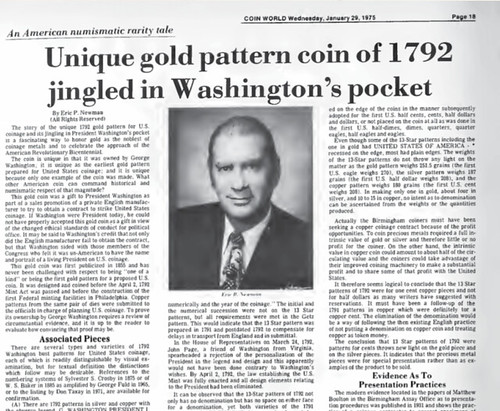
To read the complete article, see:
https://www.ha.com/information/eric-newman-1792-coin.s
To read the complete brochuer, see:
https://www.heritagestatic.com/c/d/cms/916/555/uscoins-newman-presidential-coin.91655563.pdf
THE BOOK BAZARRE
SELECTIONS FROM HOLABIRD JUNE 2018 SALE
1883 Hawaii Dollar
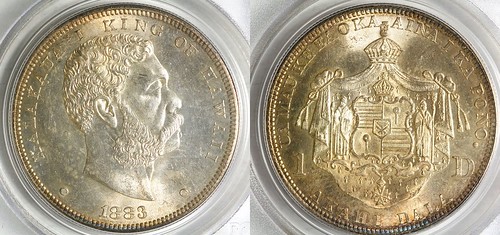
PCGS OGH MS 64. MIntage 499,974. Out of 845 graded by PCGS, only 19 are higher. In 2017 one sold for $10,575. Date: 1883 Location: Hawaii HWAC# 6074
To read the complete lot description, see:
1174 1883 $1 Hawaii Coin (https://holabirdamericana.liveauctiongroup.com/1883-1-Hawaii-Coin_i30278376)
1933 Honolulu Clearing House Note
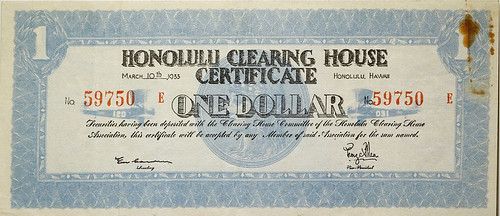
Rare Hawaii Clearing House Note, March 10, 1933. SN 59750. paperclip stain in upper right. generally fine, otherwise. Date: Location: Hawaii HWAC# 75075
To read the complete lot description, see:
1004 Hawaii Clearing House Note
(https://holabirdamericana.liveauctiongroup.com/Hawaii-Clearing-House-Note_i30278206)
Gold Hawaii Statehood Medal
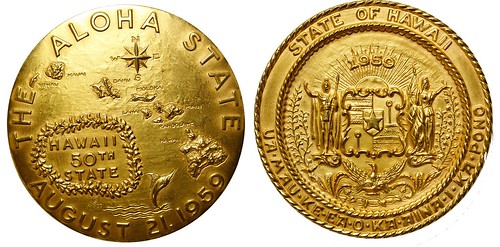
Number 20 of only 50 pieces struck, by Medallic Art Company (MACO) and nationally distributed by The Coin and Currency Institute Inc. of New York and California. in 1959. 2 1/2 inches in diamter, 7.05 troy ounces. Obverse: The Aloha State / August 21, 1959 / (map of Hawaiian Islands with compass and sailfish breeching) / Hawaii 50th State. Reverse: State of Hawaii / Ua.Mau.Ke.Ea.O. Ka. Aina. I.Ka.Pono / 1959 / (seal of Hawaii). Gorgeous high relief historical medal. The Hawaiian State Motto on the reverse translates to: The life of the land is perpetuated in righteousness. Date: 1959 Location: Hawaii HWAC# 60758
To read the complete lot description, see:
1435 Extremely Rare Gold Hawaii Statehood Medal
(https://holabirdamericana.liveauctiongroup.com/Extremely-Rare-Gold-Hawaii-Statehood-Medal_i30278637)
1968-S U.S. Mint Coin Dies
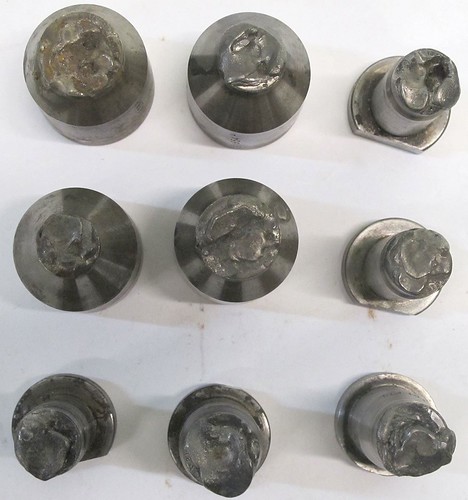
Nine dies for 1968S proof dies from the San Francisco Mint.Three dimes (obv showing the date and S; another obv with 196;); 2 dime reverses; 2 pennies, 2 nickles. Each of the dies has been braised by a welder, obscuring most of the details as a function of "cancelling" the die. Date: Location: HWAC# 75211
To read the complete lot description, see:
1409 1968S US Coin Dies (https://holabirdamericana.liveauctiongroup.com/1968S-US-Coin-Dies_i30278611)
1860-0 Silver Dollar Bag Label
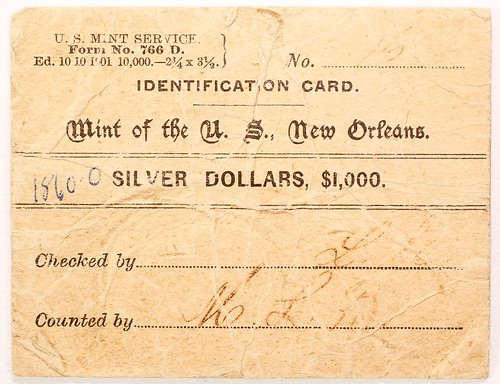
Mint Bag Label. "Mint of the U.S., New Orleans. 1860-0, Silver Dollars, $1,000." Date: 1860 Location: New Orleans, Louisiana HWAC# 75105
To read the complete lot description, see:
1568 New Orleans Mint Bag Label
(https://holabirdamericana.liveauctiongroup.com/New-Orleans-Mint-Bag-Label_i30278770)
For more information, see:
http://holabirdamericana.com/
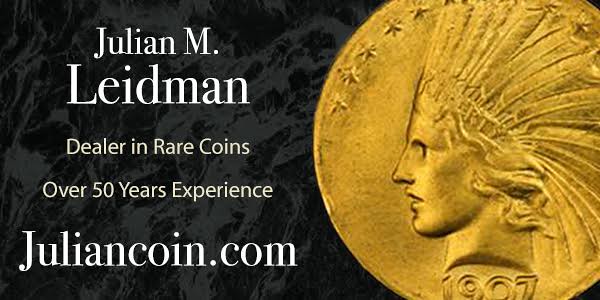
THE CALDWELL COLLECTION OF AUSTRALIAN BANKNOTES
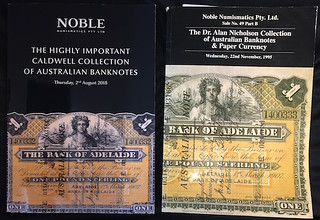 August 2nd 2018 will see the biggest and most important auction of Australian banknotes held in this country since the Nicholson sale back in November 1995. I don’t think it’s any
coincidence that the note featured on the front cover of the auction catalogue by Noble Numismatics for the Caldwell collection of Australian Banknotes is the first note in a consecutive pair - the
second note featured on the front cover of catalogue of the Nicholson collection.
August 2nd 2018 will see the biggest and most important auction of Australian banknotes held in this country since the Nicholson sale back in November 1995. I don’t think it’s any
coincidence that the note featured on the front cover of the auction catalogue by Noble Numismatics for the Caldwell collection of Australian Banknotes is the first note in a consecutive pair - the
second note featured on the front cover of catalogue of the Nicholson collection.
Times have sure changed since then - few dealers and collectors from that generation remain active today, and the market for Australian notes has been through several phases since then.
History and rarity doesn’t change one iota over time however, so I have no doubt at all that this sale will be keenly attended by a large group of dedicated collectors keen to lock in their own slice of Australian numismatic history. There are so many incredible notes in this sale, the collection and auction will surely be looked at in years to come as one of the most important collections to have ever been formed.
It is interesting to see that the collector behind the Caldwell collection didn’t enter into the area of colonial currency notes, however each era in Australian banknotes that followed on from our earliest days (Pre Federation; Superscribed; Commonwealth; Paper Decimal and Polymer Decimal) are all comprehensively represented.
A collection like this requires just as much good taste, connections and determination as it does financial reserves, and it’s clear to me that those that formed the Caldwell had all the resources required to achieve such a momentous task. Here are my thoughts on the composition of the collection, section by section:
Pre Federation Banknotes
Back in the days before the GFC, prefed notes were very seldom seen at auction or on the open market. You’d be flat out seeing more than 3 prefed notes in most auctions, they were so tightly held.
Such notes have been far more readily available over the past five years or so, however I sincerely don’t think this availability will be the norm in years to come, as large numbers simply don’t
exist.
The Caldwell collection contains a great range of notes from the pre federation period - those printer’s proofs that are included are all rarities otherwise unseen in specimen or issued form, while the specimens are all rare, beautiful or historic (some meet each of those three criteria).
The issued notes are rounded out by two incredibly rare notes issued by the Queensland State Government in the 1890’s, as well as another by the NSW State Treasury at the same time.
Many of these notes have not been seen in several decades at least.
Superscribed Banknotes
Superscribed banknotes are so rare that many (if not most) collectors of Australian pre-decimal notes never see them, and so don’t understand just how important they are. In the decade following
Federation, members of the Australian Labor Party were so keen to have notes issued by the Commonwealth Government enter circulation that they drafted an idea whereby unissued notes from Australia’s
private banks were over-printed by the government printer and used as an interim measure until the Government’s facilities were ready to produce the uniform notes now known to collectors as
“Treasury” notes from 1913.
I can’t think of an auction in the past decade that has featured more than 3 of these notes at any one time, superscribed notes are so rare those were invariably from the most readily available banks and “only” in low grade.
The Caldwell collection contains no less than 21 different superscribed notes, which is only half a dozen less than was in the Nicholson collection back in 1995. Some of the notes included here are from truly rare domiciles, others are in remarkably high quality, two consecutive pairs are included also.
One of the key notes in the entire sale is lot 4257, the superscribed £1 on a form from the Bank of Victoria. It is just the 9th superscribed banknote printed, and is also the lowest superscribed note in private hands. If Australia’s first ten shilling note from 1913 is worth a million or more, this £1 note which was issued three years earlier has to be worth more than the stated estimate of $35,000. Several superscribed five pounds and several superscribed ten pound notes are also included, both incredibly rare in private hands, and unseen for decades.
It will be interesting to see how the market reacts to this availability - I see it as being an incredibly rare opportunity to pick up an exclusive slice of Australia’s monetary history.
To read the complete article, see:
Noble Numismatics Auction 118b Preview - The Caldwell Collection
of Australian Banknotes (https://www.sterlingcurrency.com.au/articles/noble-numismatics-auction-118b-preview-caldwell-collection-australian-banknotes)
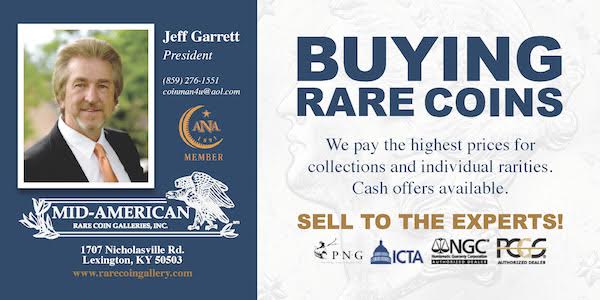
RAWLIN'S CHARLES I OXFORD CROWN DISCOVERED

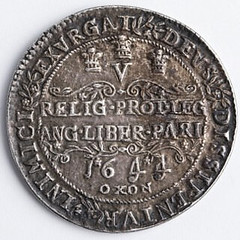
A 69-year-old grandmother who was about to throw a box of old coins in the bin was shocked to discover that one of them is worth £100,000.
The unnamed woman from Hull didn't realise she was in possession of the Rawlin's Oxford Crown, an exceptionally rare coin minted in 1644, during the reign of Charles I.
She inherited the piece, which was among a shoebox full of coins, decades earlier from her grandfather and recently rediscovered it while clearing out the attic.
But it was only when she posted it to Leeds-based website Vintage Cash Cow, alongside other items of costume jewellery and a silver plated tea set, that she discovered the true value.
Now experts from the site are organising the auction of the coin, which is expected to take place in either London, New York or Hong Kong and fetch more than £100,000 thanks to its rarity and exceptionally good condition.
It's thought that the coin is one of one of only 100 that were produced.
What is the Rawlin's Oxford Crown?
Thomas Rawlins was a medalist and playwright born around 1620, who also worked as a goldsmith and gem engraver.
After the outbreak of the English civil war he was based at the King Charle's I's headquarters in Oxford and his signature appears on coins of the Oxford mint from 1644 to 1646.
In 1644 he produced a coin, known as the Oxford crown because of the view of the city behind the King's figure on horseback.
On the reverse it details his aimed in the war - to uphold the Protestant religion, laws of England and freedom of parliament.
To read the complete article, see:
Grandmother discovers a rare coin from 1644 in a box of 'junk' from her
attic that she was going to throw in the bin - and now she's set to make £100,000
(http://www.dailymail.co.uk/femail/article-5835561/Grandmother-discovers-rare-coin-worth-100K-box-junk.html)
BELGIAN GOLD COIN HOARD FOUND IN FRANCE
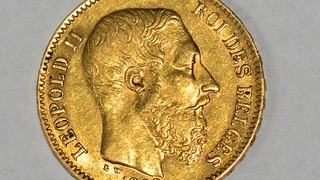 WORKERS have made an unexpected discovery when demolishing an uninhabited house in France — 600 gold coins.
WORKERS have made an unexpected discovery when demolishing an uninhabited house in France — 600 gold coins.
A paramilitary police officer said the workers discovered the coins in the cellar after rattling a mysterious, shell-shaped container.
They were Belgian, dated 1870, and bore the face of the then-reigning king of Belgium, Leopold II.
The gendarmerie said the treasure found in Brittany, a region in northwest France, has since been put under lock and key until they uncover more information about its origin.
Local media reports the hoard could be worth 100,000 euros ($AU155,000).
To read the complete article, see:
YOU wouldn’t believe the unexpected
discovery these workers made when demolishing a house — it dates back to the 1800s
(https://www.news.com.au/technology/science/archaeology/gold-coins-worth-155000-discovered-in-abandoned-house/news-story/3c13717cdf95baacc3939fcab4ac1634)

THE 1943 BOMBAY RESTRIKE PENNY
Andrew Crellin of Sterling & Currency in Fremantle, Western Australia writes:
The 1943 Bombay restrike penny has a tiny diamond in the obverse field that was first identified by the US numismatist George Falcke back in the early 1960’s. News of these coins being made came out just after we switched to decimal currency (arguably the apex of coin collecting in this country), so a major brouhaha erupted in the national media. It was interesting to me that a collector in the US studied his examples so keenly he was able to identify such a small characteristic that had been overlooked by the Australian market.
I came across that story via my numismatic library - the article was published in a South Australian Numismatic Journal back in the mid-1960’s. Without my library I would never have appreciated that tiny mark, nor the full story behind those coins!

In 1964, coin collectors in Australia and the United States were informed that Australian proof coins were being sold by the Bombay Mint.
The most alarming aspect of this report was that the Australian proof coins available were dated 1942 and 1943 - under normal conventions, production of them had stopped more than two decades earlier.
There was a credible explanation for this incredible revelation however, and the coins are regarded as prized rarities to this day.
Coins from India for Soldiers from America to Spend in Australia
Due to the scarcity of skilled labour and raw materials at our Mints, as well as the limits on manufacturing capacity the war imposed, coins were in very short supply across Australia after the outset of WWII. Once General Eisenhower decided that the US campaign in the Pacific was to be directed from Australia, close to a million US military personnel were based at various locations throughout Eastern Australia in the years between 1942 and 1945.
This number was at least 10% of the Australian population at the time - the arrival of the American forces here had a significant impact on many aspects of daily life in Australia, not least on the number of coins required to lubricate the wheels of commerce.
US servicemen were paid in cash, so the pre-existing scarcity of coinage was exacerbated in areas where they were based.
The US top brass were keenly aware of the potential impact on the morale of their troops if they didn't get paid.
Production of coinage during this period scaled up very quickly as a result - the number of coins struck for circulation in Australia in 1943 was more than ten times the number struck in 1939.
The Australian branch mints were simply not able to cope with this increase in demand, so production of Australia's coins was outsourced to mints as far afield as Bombay, San Francisco and Denver. The US Mints supplemented Australia’s silver coins, while the Bombay Mint was tasked with striking Australian pennies and halfpennies throughout 1942 and 1943.
The number of US servicemen based in Australia eased significantly as the war progressed, and production of Australian coins was again handled solely by Australian mints from 1945 onwards.
Indian Mints - Re-Striking Coins Since the 1890’s
An interesting adjunct to the story that Indian branch mints struck coins for Australia in times of crisis is that authorities on Indian numismatics readily acknowledge that the Indian mints have re-struck many coins for collectors for many decades. The pioneering authority on British Indian coins, Major Frank Pridmore, stated that “The principal period of these ‘original’ proof specimens was from 1890 to 1905.[1]”
“Restrike” is the term used to describe coins that were struck again after the official mintage run ended. For example, if dies used to strike a coin dated 1892 were used to strike more coins in 1927, then the resulting coins are described as being “restrikes”. Those coins were struck using official dies, by Mint staff on the Mint’s premises, so while they are unequivocally genuine, they are correctly described as “restrikes”.
The average collector might regard the practice of re-striking coins as quite unusual, however that opinion clearly wasn’t shared by the staff of the Bombay Mint throughout the 20th century.
To read the complete article, see:
The Bombay Mint Restrikes of Australia's Proof Copper Coins - 1942 and
1943 (https://www.sterlingcurrency.com.au/research/bombay-mint-restrikes-australias-proof-copper-coins-1942-and-1943)
NORTH KOREAN COINS GAIN MARKETPLACE VALUE
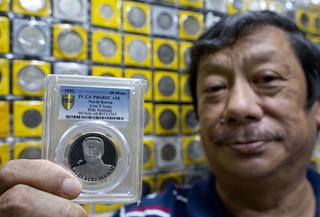 Stamped with images of "Eternal President" Kim Il Sung, national monuments or even ballistic missiles, coins minted in North Korea are renowned among collectors for their
scarcity, partly due to international sanctions that outlaw them from being auctioned.
Stamped with images of "Eternal President" Kim Il Sung, national monuments or even ballistic missiles, coins minted in North Korea are renowned among collectors for their
scarcity, partly due to international sanctions that outlaw them from being auctioned.
Now collectors in Singapore who have spent tens of thousands of dollars acquiring the coins are happy that Tuesday's summit is driving up prices and ushering first-time buyers into the market.
Joseph Poh, who has been buying and selling North Korean coins for two years, made his largest sale after the confirmation of a summit between North Korean leader Kim Jong Un and President Donald Trump.
He sold two, five-ounce gold coins to a first-time buyer at $22,500 each. There are only three in circulation and Poh had purchased them for just under $14,000 each.
"Every day we are making money, because now more people know about North Korea. The collectors are coming every day," Poh told The Associated Press.
The coins aren't always pricey. One can expect to pay $15 for uncommon copper currency, said Poh, who owns the United Numismatic Centre, which has been dealing with coins, bank notes and stamps for decades.
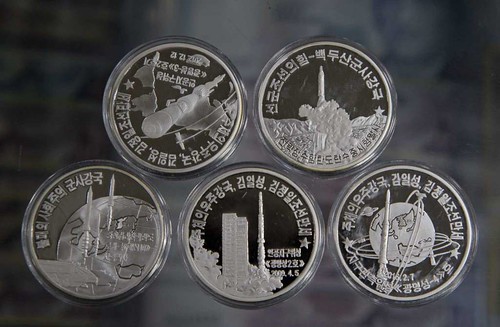
Another popular range of coins was released just before North Korea tested its first intercontinental ballistic missile last year. The five coins feature depictions of missile launches and the exploration of outer space. Only 500 sets were minted.
It's that low mintage that gives North Korean coins their value among collectors.
Still, the market is narrow. U.N Security Council sanctions have put restrictions on the country's exports, which prevents its coins from being sold at auctions.
But there appears to be a grey area. Poh said a Chinese businessman who was involved in setting up a mint in Pyongyang before sanctions were imposed is still allowed to sell them at coin shows in Singapore and around the region. The coins are authenticated in China by the Professional Coin Grading Service.
Because they are technically Chinese products, dealers around the world can display these coins prominently in glass cabinets and say they are for sale.
To read the complete article, see:
Singapore Postcard: Summit adds value to North Korea's
coins (https://www.newcanaannewsonline.com/news/world/article/Singapore-Postcard-Summit-adds-value-to-North-12986108.php#photo-15707914)
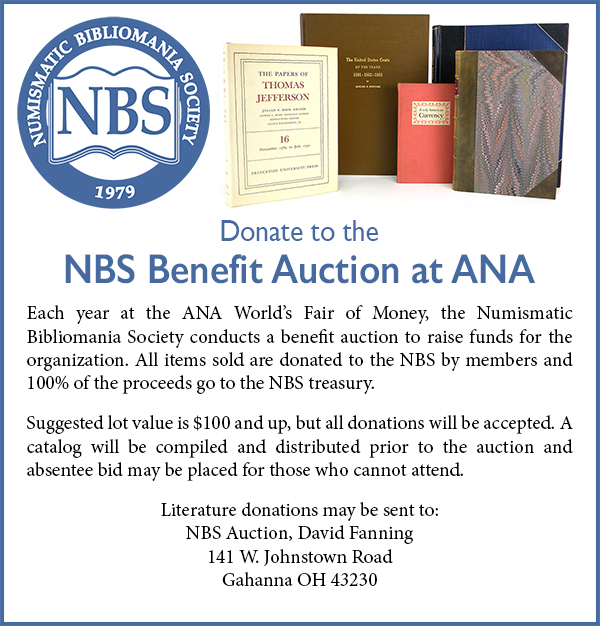
EARLY PADDINGTON BEAR COIN CAUSES STIR
 A savvy college student has sold a special edition 50p coin, featuring Paddington Bear, for £16,100 on eBay, after frenzied bidders battled to win the silver piece.
A savvy college student has sold a special edition 50p coin, featuring Paddington Bear, for £16,100 on eBay, after frenzied bidders battled to win the silver piece.
The Paddington Bear coin has not yet been released by the Royal Mint, but seller Jordan Mcilquham said she had found the coin in her change "after a quick shop" in Caerphilly, south Wales.
Overall, 116 collectors fought for the coin, the only one currently in circulation, before the sale was won.
According to This is Money, when the Royal Mint discovered the coin had been found by the student, it demanded it be sent back and the eBay listing taken down.
To read the complete article, see:
Paddington Bear 50p coin sells for £16k after accidental release
(https://www.telegraph.co.uk/money/consumer-affairs/paddington-bear-50p-coin-sells-16k-accidental-release/)
David asks:
If the coin was accidentally released early won't the value fall when it is fully available?
THE Royal Mint is set to release two new Paddington Bear 50p coins on Monday – as a leaked unreleased coin is already being flogged for £16,000 on eBay.
The uncirculated silver coins come with rare colour detail, in celebration of Paddington Bear’s 60th anniversary.
It features the iconic Peruvian bear in two of the most iconic locations from his London adventures – Paddington Station and Buckingham Palace.
The coins will go on sale on the Royal Mint’s website from Monday, June 18.
Dave Knapton, the coins’ designer at The Royal Mint, said: “I loved reading the books about Paddington when I was younger, and felt a real sense of nostalgia as I was designing these coins."
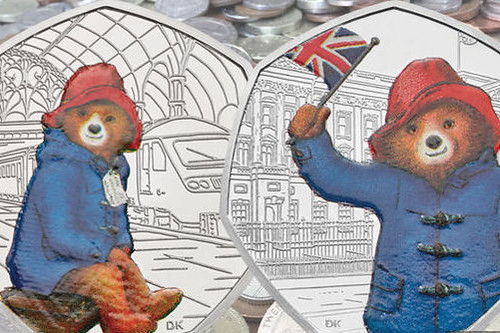
The news comes as a student claimed they had found one of the rare Paddington Bear coins in South Wales and listed it on eBay at a whopping £16,100, reports Express.co.uk.
Responding to the alleged leak, Royal Mint later told This is Money: “It has been reported to us that a commemorative 50p coin featuring Paddington Bear has been spotted.
“We have undertaken our usual review when we are informed by the general public of such matters.
"However we can confirm that at no point was any commitment given to purchase the coin.
“The launch of the new Paddington Coins will proceed as originally planned.”
To read the complete article, see:
New Paddington Bear 50p coins out SOON as leaked coin sells for £16k on
eBay (https://www.dailystar.co.uk/news/latest-news/709754/royal-mint-news-50p-coin-paddington-bear-ebay-rare-silver)
In this case it seems there was a bid, but it was likely fake.
Jordan added: "I'm not a coin collector so it was a bit of a surprise. I have been contacted by the Royal Mint. We had advice and were told it was their mistake so I could keep the coin if I wanted to.
"I put it up on eBay and it went up for £16,000 but I think it was a fake bid. It's currently still in my bedroom. I'm just keeping it for now.
"I'll have to get in contact with eBay and see what can come of it because I'm worried as there are so many fake bidders."
To read the complete article, see:
Royal Mint's new Paddington Bear 50p coin found by chance by Welsh student gets bids of
£16,000 (https://www.walesonline.co.uk/news/wales-news/royal-mints-new-paddington-bear-14789194)
WWII CASH HOARD WORTH FACE VALUE AT BEST
There were roughly 30 wads of £5 and £1 notes for a total of £130,000, or over $2 million in today’s U.S. dollars—enough to buy you a New York City two-bedroom condo (with maybe one roommate) or a 18,000-square-foot, six-bedroom home in Fargo, North Dakota.
In her A Bank Note Affair Newsletter 89 published June 14, 2018, banknote dealer Pam West writes:
A hoard of £30,000 in old blue £1's and white £5's was found by a builder in Brighton - the Police are looking after it, but, after almost 70 years hidden away the notes have deteriorated somewhat - I spoke live about it with Neil Pringle on BBC Breakfast Sussex radio on Friday 8th June at 7.25am. If sent off to the mutilated bank note department of the Bank of England would, when carefully separated, still be worth face value.
To read the complete article, see:
Found: A Wad of World War II Bills Worth Over $2 Million
(https://www.atlasobscura.com/articles/world-war-two-cash-found)
To read the earlier E-Sylum article, see:
WWII CASH HOARD FOUND (http://www.coinbooks.org/v21/esylum_v21n23a23.html)
To visit Pam West's web site, see: http://britishnotes.co.uk/
THE BOOK BAZARRE
MINT LAUNCHES VOYAGEURS NATIONAL PARK QUARTER
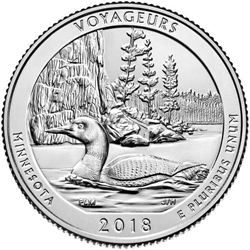 The United States Mint (Mint) joined the National Park Service today to launch the America the Beautiful Quarters® Program coin honoring Voyageurs National Park in Minnesota. It is the
third America the Beautiful Quarters coin issued in 2018 and the 43rd release in the series.
The United States Mint (Mint) joined the National Park Service today to launch the America the Beautiful Quarters® Program coin honoring Voyageurs National Park in Minnesota. It is the
third America the Beautiful Quarters coin issued in 2018 and the 43rd release in the series.
This latest quarter’s reverse (tails) design depicts a common loon with a rock cliff in the background. Inscriptions are “VOYAGEURS,” “MINNESOTA,” “2018,” and “E PLURIBUS UNUM.” The obverse (heads) design depicts the 1932 restored portrait of George Washington by John Flanagan. Inscriptions are “UNITED STATES OF AMERICA,” “LIBERTY,” “IN GOD WE TRUST,” and “QUARTER DOLLAR.” A digital image of the quarter is available here.
In his remarks during the launch, Mint Director David J. Ryder said, “Just as the loon’s yodels and wails are a distinctive and timeless sound of Northern Minnesota’s wilderness and waterways, the Voyageurs quarter will echo the histories and cultures of the people who have been connected here through trade, industry, and recreation.”
Retired ornithology professor Leland Grim led a festive ceremony that featured musical performances by International Falls natives Gavia Yount and Darcy Sullivan. Boy Scouts of America Troop 150; Cub Scout Troop 145; Girl Scouts of America Troops 1150, 1151, 1153, and 1156; and Veterans of Foreign Wars Color Guard 2948 also participated in the ceremony. Guest speakers were Ida Rukavina, Regional Outreach Director for U.S. Senator Amy Klobuchar; Peter Makowski, Regional Outreach Director for U.S. Senator Tina Smith; Tom Whiteside, who represented U.S. Congressman Rick Nolan; and Park Superintendent Bob DeGross.
“The beauty and recreational opportunities of Voyageurs National Park in Minnesota make it a fantastic year-round destination for sightseeing, fishing, boating, and hiking,” said Secretary of the Interior Ryan Zinke. “The park's interconnected lakes, maze of water ways, 2.7 billion year-old exposed geological layers, campsites, and trails are examples of the many treasures and experiences available on America's vast network of public lands.”
The Mint bookended the coin launch with its customary public coin forum on the eve of the launch ceremony and a currency exchange for $10 rolls of Voyageurs National Park quarters the following day. Products containing the new quarter are available for purchase via the Mint’s online catalog.
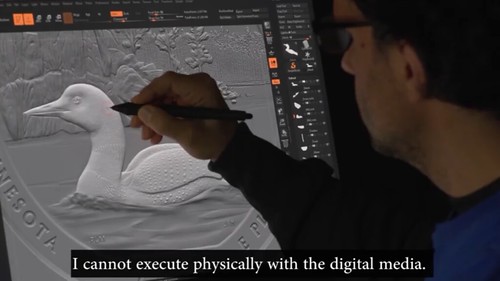

To read the complete article, see:
United States Mint Launches America the Beautiful Quarters® Program Coin Honoring Voyageurs National Park Quarter
(https://www.prweb.com/releases/2018/06/prweb15563713.htm)
To watch the Joseph Menna video, see:
Voyageurs National Park (2018) (https://www.youtube.com/watch?v=7RwKQjtanmw)
ISKOWITZ DESIGNS WWI BRADFORD EXCHANGE SERIES
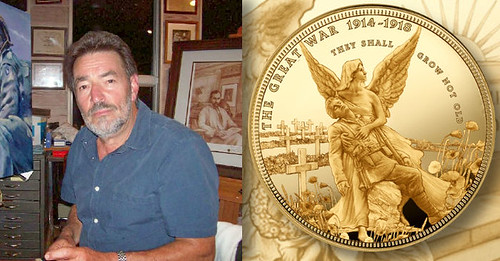
On or before Veterans’ Day, November 11, 2018, the Bradford Exchange will launch a series of coins designed by renowned American artist and designer Joel Iskowitz that pays tribute to the fallen soldiers of the First World War (1914-1918).
Mr. Iskowitz retired from the U.S. Mint earlier this year as the most prolific coin and medal designer of the Mint’s Artistic Infusion Program that is intended to add greater diversity to the designs that appear on U.S. coins and medals.
He designed 54 important works of numismatic art for the Mint between 2005 and 2017, which includes some of the most well-regarded designs of recent decades such as several for the American Platinum Eagle Proof coin series and the 2016 Theodore Roosevelt National Park coin in the America the Beautiful series.
Mr. Iskowitz has a distinct artistic style and refers to himself as a “narrative artist,” which means his art is designed to use images to tell a story. Early in his career, he worked as an illustrator for books and other materials.
He also noted in an interview I did with him earlier this year that he was influenced by the great art of ancient Greece and Rome and by the renowned artists of the Renaissance and Baroque periods.
These elements of his artistic approach are on full display in the impressive series of coins he designed for the UK-based Bradford Exchange Limited, a web-based company that sells commemorative plates and other items for collectors that was founded in 1973.
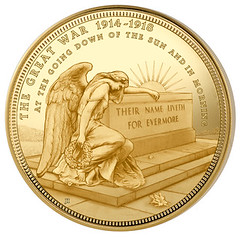
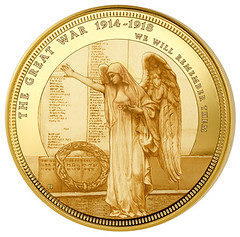
The series, which will be struck in gold — and possibly in silver — is being issued with the cooperation and endorsement of the Lest We Forget Association, a voluntary organization created in 1922 to provide support and other services for disabled servicemen and women.
To read the complete article, see:
Great War remembrance coin series designed by Joel Iskowitz
(http://news.coinupdate.com/great-war-remembrance-coin-series-designed-by-joel-iskowitz/)

HUNGARY FIUMEI ROAD CEMETERY COIN
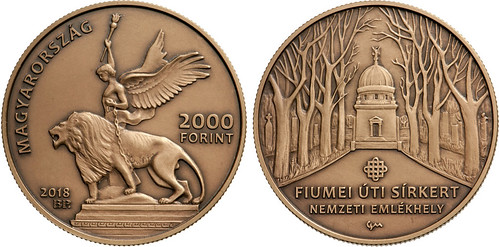
The Hungarian Mint, in partnership with the Hungarian National Heritage Institute, began a series of legal tender commemorative coins presenting national memorials in 2014, with a new coin added every year. (2014: Somogyvár-Kupavár, 2015: Mohács, 2016: New Public Cemetery in Rákoskeresztúr, 2017: Parliament and Kossuth Square.) The 2018 issue is a 2,000 forint, bronze-patinated coin honoring Budapest's Fiumei Road Cemetery.
The coin was designed by the sculptress Márta Csikai. The obverse features a half-view of one of the cemetery’s most well-recognized statues that also is the inspiration for its logo: the statue atop the tomb of the statesman Lajos Kossuth by the sculptor Alajos Stróbl. The winged genius of freedom, strength and enlightenment, holding a torch in one hand is standing behind a lion freed from its chains symbolizing the Hungarian nation. The reverse shows the mausoleum of “The Wise Man of the Nation,” Ferenc Deák, and the walkway leading to it, with gravestones in the background. The 18.4 gram, 37 millimeter coin is limited to an issue of 5,000 pieces. It costs $22.95 and will be released at the end of June.
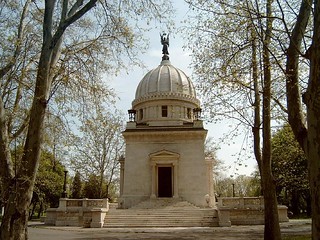 With a history reaching back almost 170 years, the Fiumei Road Cemetery has become a famous site similar to the Père-Lachaise Cemetery in Paris, but instead of the graves of Molière, Chopin
and Jim Morrison one can visit the final resting places of renowned Hungarians such as Ady, Jókai, Arany, Erkel, Faludy, Jancsó and Imre Kertész. There is also a mausoleum for the great national hero
Lajos Batthyány in addition to those for Deák and Kossuth. The cemetery was opened in the middle of the 19th century as a public burial ground in Pest, and by the end of that century it was the most
important one in Hungary. The cemetery also preserves the memories of the eras since the Revolution of 1848.
With a history reaching back almost 170 years, the Fiumei Road Cemetery has become a famous site similar to the Père-Lachaise Cemetery in Paris, but instead of the graves of Molière, Chopin
and Jim Morrison one can visit the final resting places of renowned Hungarians such as Ady, Jókai, Arany, Erkel, Faludy, Jancsó and Imre Kertész. There is also a mausoleum for the great national hero
Lajos Batthyány in addition to those for Deák and Kossuth. The cemetery was opened in the middle of the 19th century as a public burial ground in Pest, and by the end of that century it was the most
important one in Hungary. The cemetery also preserves the memories of the eras since the Revolution of 1848.
More of the great figures from Hungarian history and culture are buried here than anywhere, and many of the monuments designed by famous architects and sculptors are said to have great artistic value. The cemetery has separate sections for artists, Jacobins, and heroes of the 1848 and 1956 revolutions. Almost resembling an arboretum, the huge 138 acre cemetery is also known for its rich flora and fauna. It has been managed by the National Heritage Institute since 2016.
To order, or for more information on these and other coins of Hungary, contact the Hungarian Mint's North American Representative at P.O. Box 399, Williston, VT 05495. Toll-free 1-800-421-1866. Fax 802-536-4787. Email: mail@coin-currency.com, or click on the Hungarian flag at www.coin-currency.com for secure website ordering. Add $5.75 to each order for shipping and handling in the U.S.A. Shipping to other countries will be based on actual cost. Vermont residents add 6% sales tax.
THE BROKEN COIN

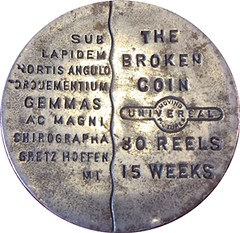
There are many bits and pieces of memorabilia from this film that survive from 1915. The most interesting is a steel coin, size of a silver dollar, that was produced in vast quantities as a promotional piece.
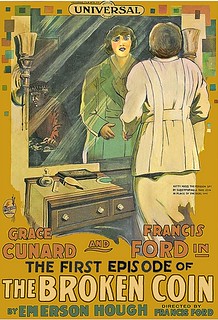 The coin is deeply scored to show where it had been broken. The Latin inscription on the left half of the reverse is loosely translated. "Under the floor of the northeast corner of the
torture chamber, you will find the treasures of the King of Gretzhoffen." The MI are the first two letters of MICHAEL III whose profile fills the obverse.
The coin is deeply scored to show where it had been broken. The Latin inscription on the left half of the reverse is loosely translated. "Under the floor of the northeast corner of the
torture chamber, you will find the treasures of the King of Gretzhoffen." The MI are the first two letters of MICHAEL III whose profile fills the obverse.
To the right of the break the coin promotes the run of the serial; 15 episodes in 30 weeks, each episode a two-reeler. The film opened June 21, 1915 and was so successful it ran for 22 weeks.
Examples of the steel Broken Coin are almost always available on eBay. The film itself, all 44 reels of it, is gone. They have disappeared and probably no longer exist.
For more information on PAN, see:
https://pancoins.org/
To read the earlier E-Sylum article, see:
Coins and Money in Silent Films (http://www.coinbooks.org/v21/esylum_v21n20a24.html)

OTAKAR DUšEK AWARDED WACKS JUDAICA ART MEDAL
Otakar Dušek Receives Mel Wacks Judaica Art Medal Award for Women’s Death March Medal
 The newly established Mel Wacks Judaica Art Medal Award was presented at the 2018 XXXV FIDEM Art Medal Congress awards banquet in Ottawa on June 3 rd . It was awarded to Otakar Dušek, from
the Czech Republic, for his Todesmarsch (Death March) medal “that breaks down barriers for medallic art that have been in place since the Renaissance. It shows how a relatively small medal can have
significance far beyond its size,” said Wacks in his presentation.
The newly established Mel Wacks Judaica Art Medal Award was presented at the 2018 XXXV FIDEM Art Medal Congress awards banquet in Ottawa on June 3 rd . It was awarded to Otakar Dušek, from
the Czech Republic, for his Todesmarsch (Death March) medal “that breaks down barriers for medallic art that have been in place since the Renaissance. It shows how a relatively small medal can have
significance far beyond its size,” said Wacks in his presentation.
The medal fit into the theme of the FIDEM conference—Women and the Art Medal.
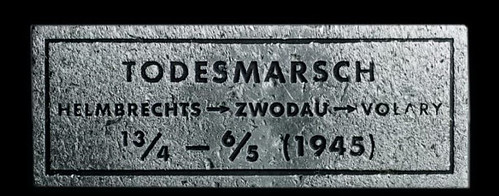
Here is a description of this project in Otakar’s words:
“A concentration camp for women was located near the German municipality of Helmbrechts. On April 13, 1945, it was hastily evacuated, as US troops were approaching. Almost 1,200 pitiful women prisoners from this camp were thus force- marched towards Germany-occupied Czechoslovakia.
After 5 days and 90 kilometers, the column reached the women‘s concentration camp at Zwodau. This part of the march had just one goal – the elimination of all the prisoners along the way.
Sadly, the story of these women is almost unknown in my country today. I too came across it by accident. And it was why I felt it would be appropriate to commemorate the event by making a medal.
It took more than a year of archival research to collect enough documents and period maps to be able to reconstruct, fairly accurately, the route of the march.
On April 13, 2015, exactly 70 years after the death march, I set out from Helmbrechts, the place where the concentration camp had been located in 1945. I was wearing boots with special soles into which I was inserting memorial silver medals, of which a symbolical number of seventy had been produced.
The medals were designed so that their shape reminds of the labels on boxes of Mauser ammunition used by the SS-guards to execute the exhausted woman prisoners. The text engraved on the obverse side of the medal reads “Todesmarsch – Death March”, followed by the names of the towns the column passed through; Helmbrechts – Zwodau – Volary. The reverse side of the medal shows the manufacturing date for each medal.
As I was walking with the medals inserted in the soles of my boots, the silver the medals had been made of got damaged. A part of the march route has thus been indelibly imprinted in each medal. The damage to the metal also gives you a clear idea of the immense suffering the female prisoners were exposed to, since most of them were marching barefooted or in primitive wooden clogs.
The video documenting my 3 week march has been recorded on a memory stick which accompanies each medal. The medal is placed loosely inside a cloth bag, that has been made of the same woven material used to make prisoners’ uniforms worn in the Ravensbrück concentration camp, which also supplied uniforms for the Helmbrechts camp. The memory stick is inserted inside a seam in the fabric; this symbolizes the fact that the prisoners hid their valuables in the seams of their clothes, so they were not confiscated during inspections performed by guards.
To this day, we cannot say exactly how many victims this death march claimed. Some of the dead bodies have never been found.
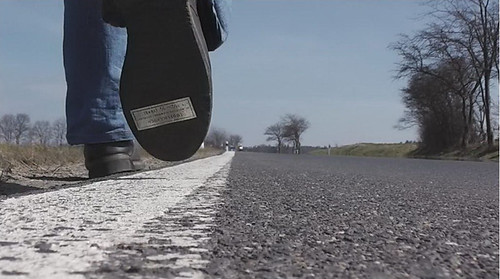
For further information about Project Todesmarch, you can contact Otakar Dušek at o.dusek@seznam.cz.

SHOVING THE QUEER IN ALLENTOWN, PA
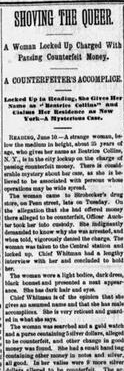 The June 11, 1891 edition of The Critic features the rather odd headline, ‘Shoving the Queer.’
The June 11, 1891 edition of The Critic features the rather odd headline, ‘Shoving the Queer.’
It was a story of counterfeiting, or passing “queer” money:
Reading, June 10 — A strange woman, below the medium in height, about 25 years of age, who gives her name as Beatrice Collins, N.Y., is in the city lockup on the charge of passing counterfeit money. There is considerable mystery about her case, as she is believed to be associated with persons whose operations may be wide spread.
The woman came to Strobecker’s drug store, on Penn street, late on Tuesday. On the allegation that she had offered money there alleged to be counterfeit, Officer Auchter took her into custody. She indignantly demanded to know why she was arrested, and when told, vigorously denied the charge. The woman was taken to the Central station and locked up. Chief Whitman had a lengthy interview with her and concluded to hold her.
The story goes on to say that the chief believed the woman was giving a fake name and had male accomplices. Police found a gold watch, some real money and 14 silver dollars they believed were counterfeit in her purse and valise.
To read the complete article, see:
Pages from Lehigh Valley History: 'shoving the queer,' death on the rails and a suicide
(http://www.mcall.com/news/breaking/mc-nws-lehigh-valley-history-june-11-1891-story.html)
IN OTHER NEWS: JUNE 17, 2018
2018 Mint Directors Conference Awards
From 22-26 April 2018 the XXX Mint Directors Conference (MDC) took place in Seoul. One of the highlights of the event was as usually the moment when the expert jury announced the winners of the MDC Awards.
To read the complete article, see:
Mint Directors Conference Awards 2018
(http://www.coinsweekly.com/en/News/Mint-Directors-Conference-Awards-2018/4?&id=5436)
FEATURED WEB SITE: NUMISMATIC SOCIETY OF IRELAND
This week's Featured Web Site is the Numismatic Society of Ireland.The Numismatic Society of Ireland is Ireland's community of individuals who are committed to the study of coins, tokens, banknotes, medals and other artefacts relating to numismatics. The worldwide membership consists of collectors, dealers and professionals from the numismatic world and other disciplines.
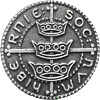
www.numismaticsocietyofireland.com

